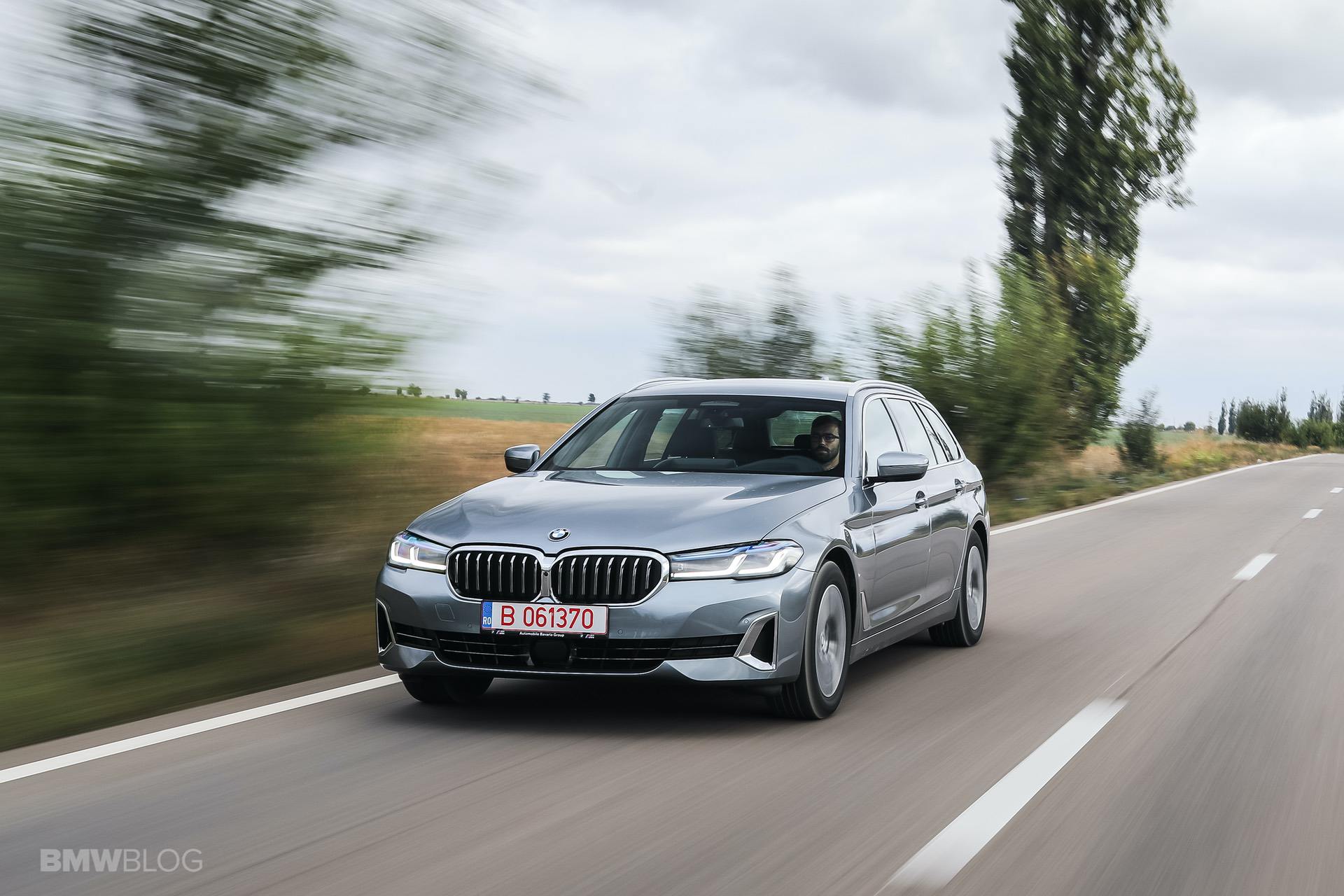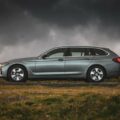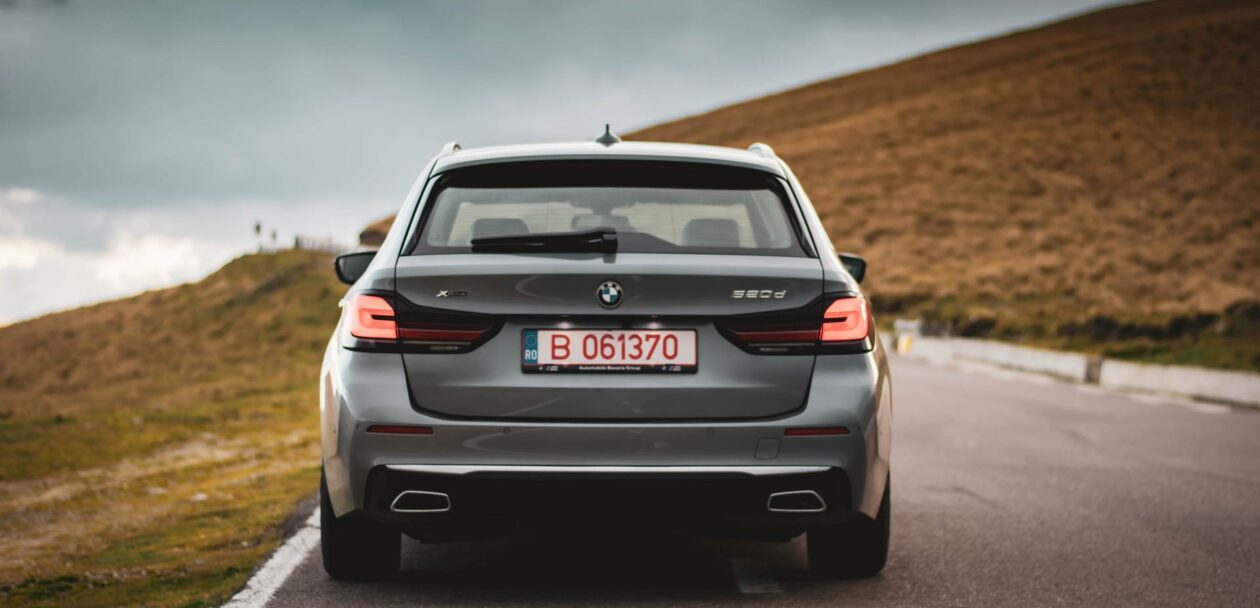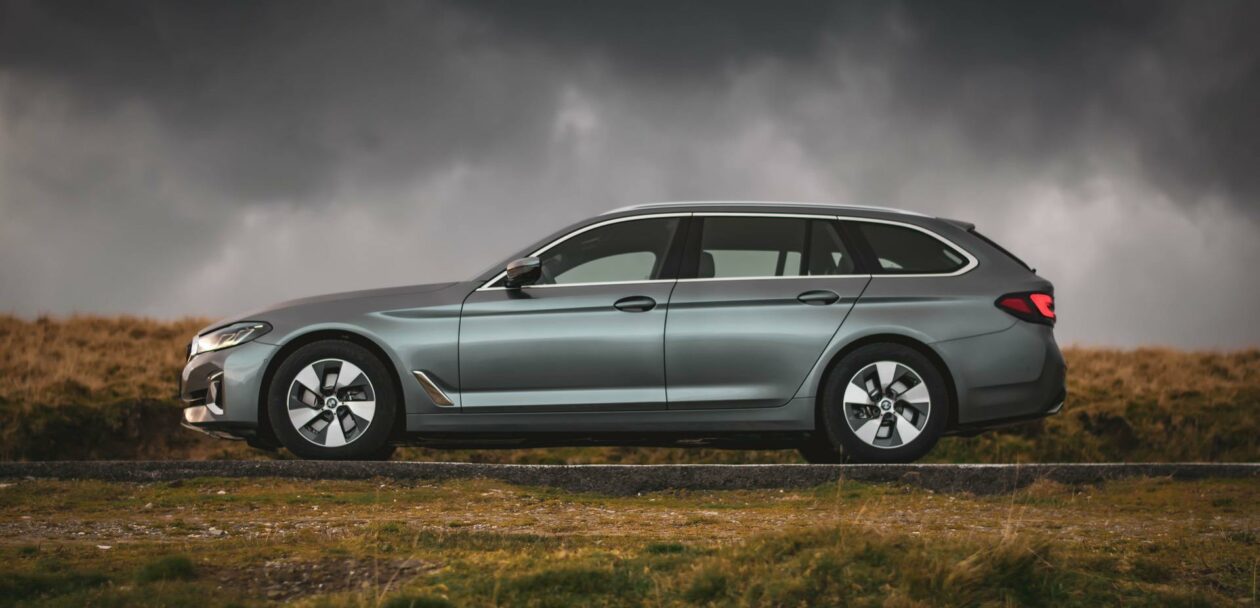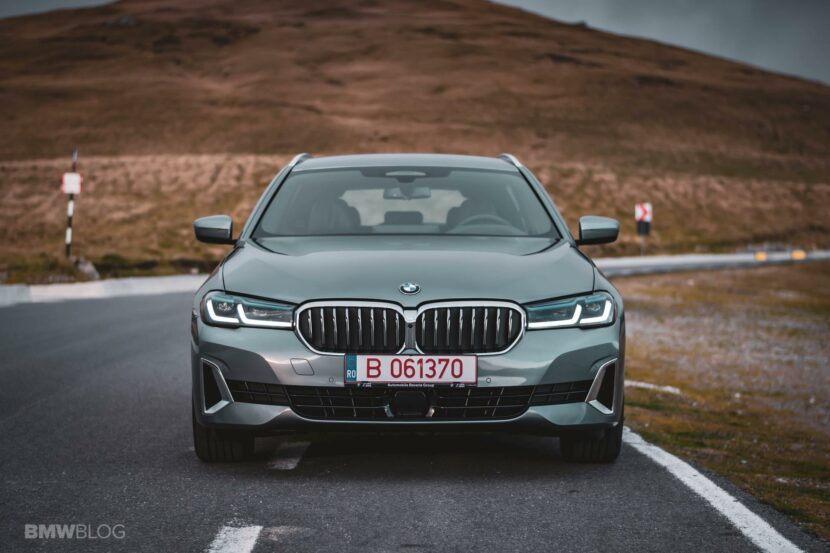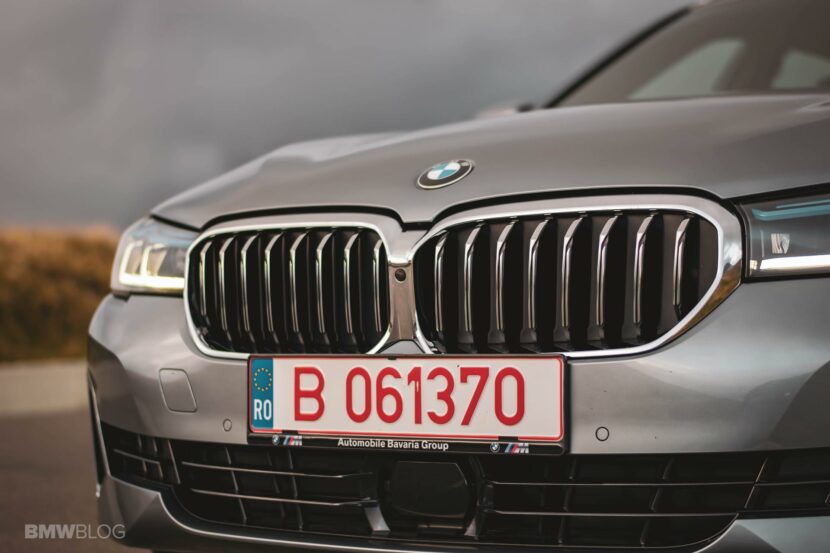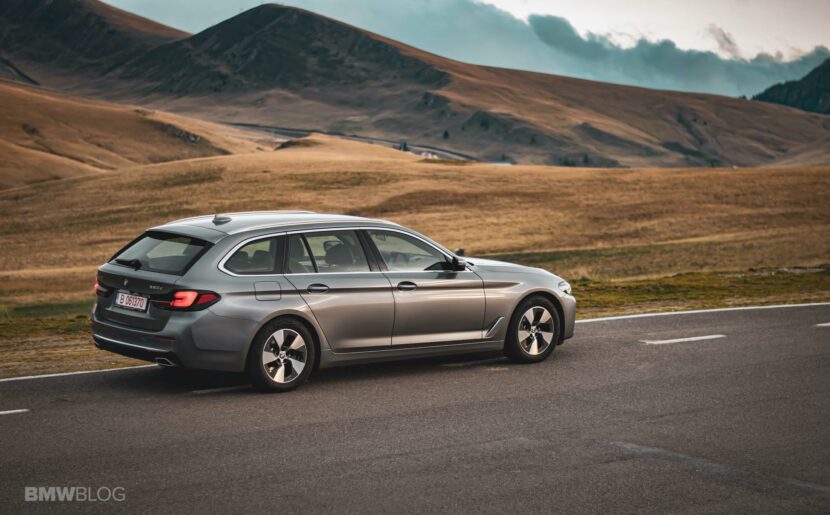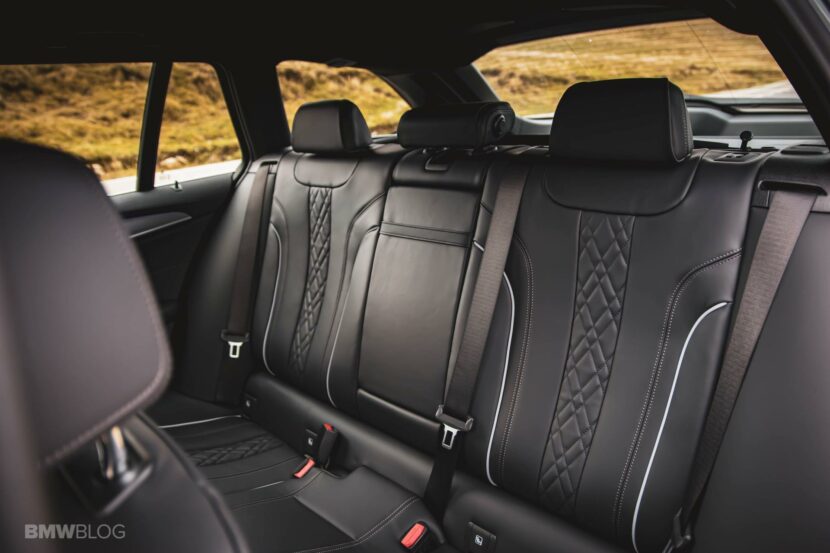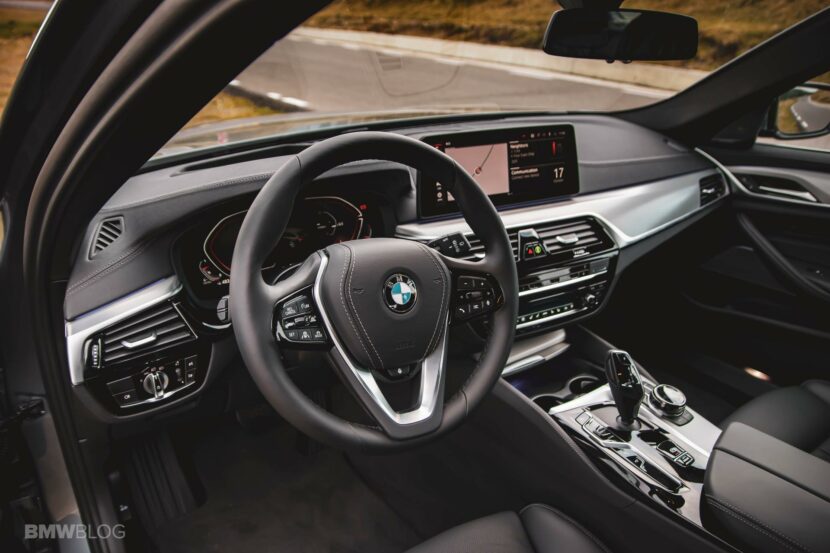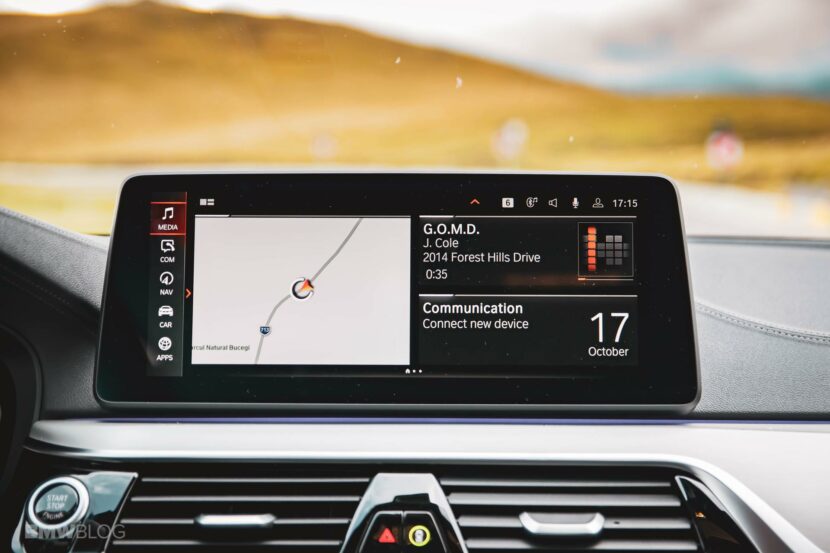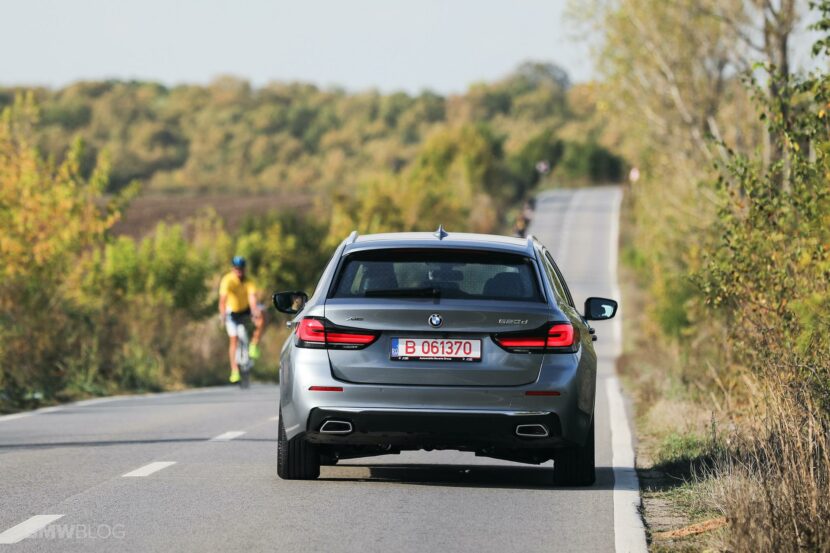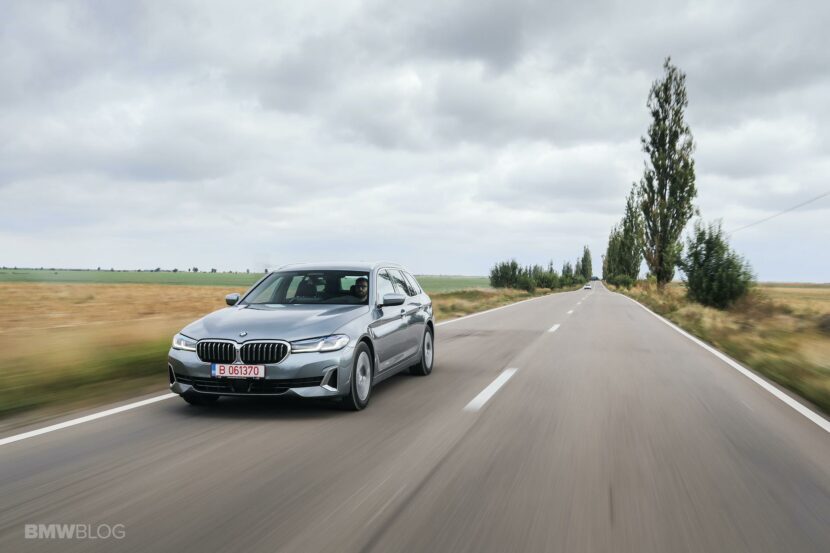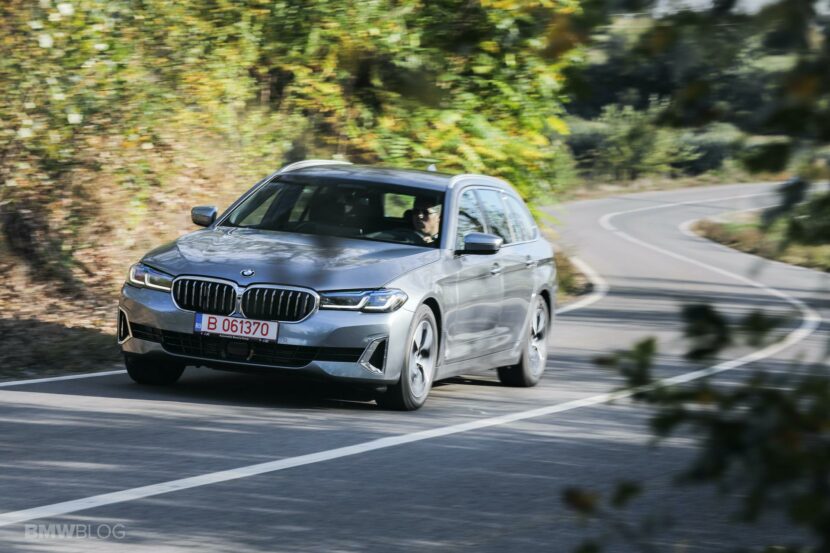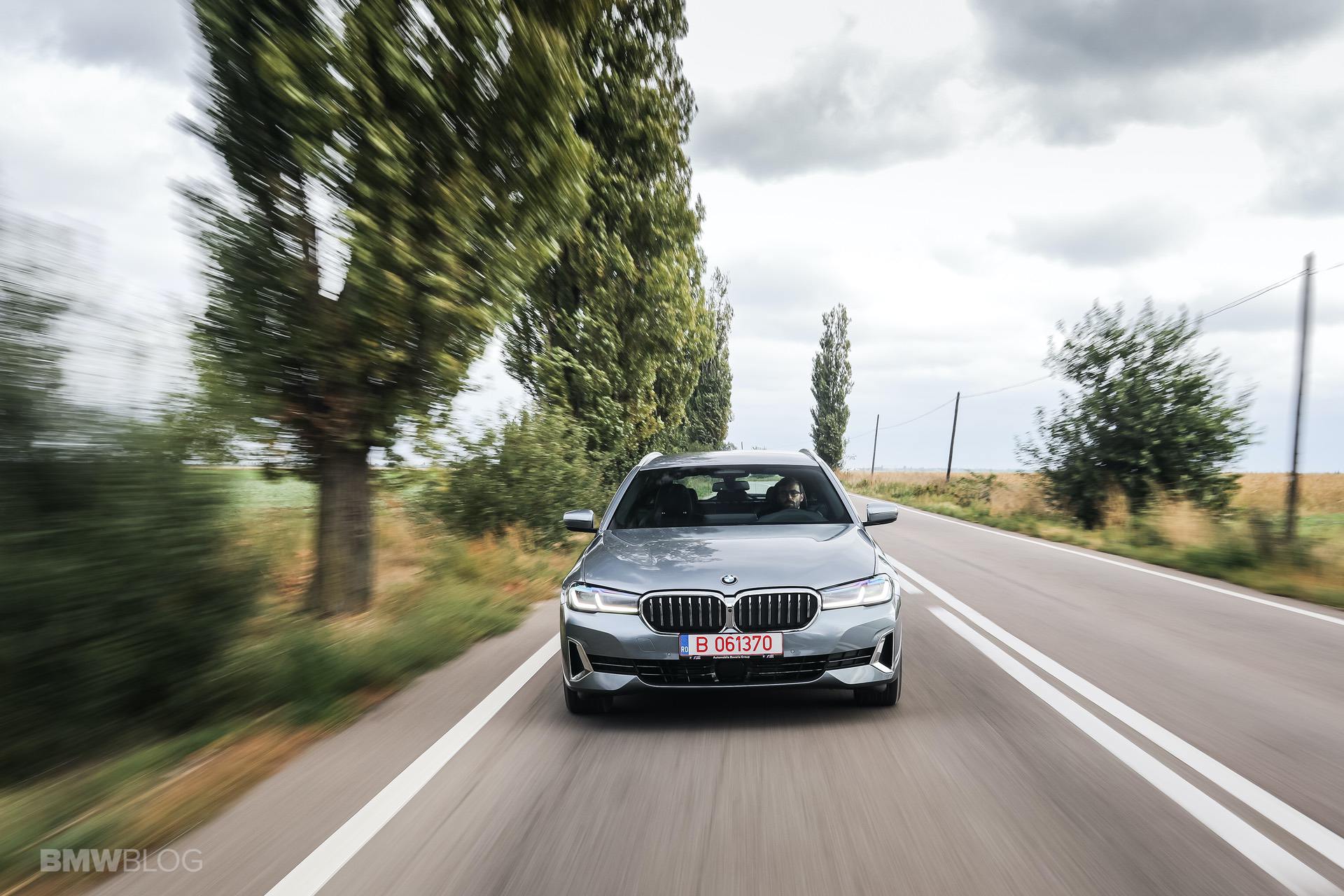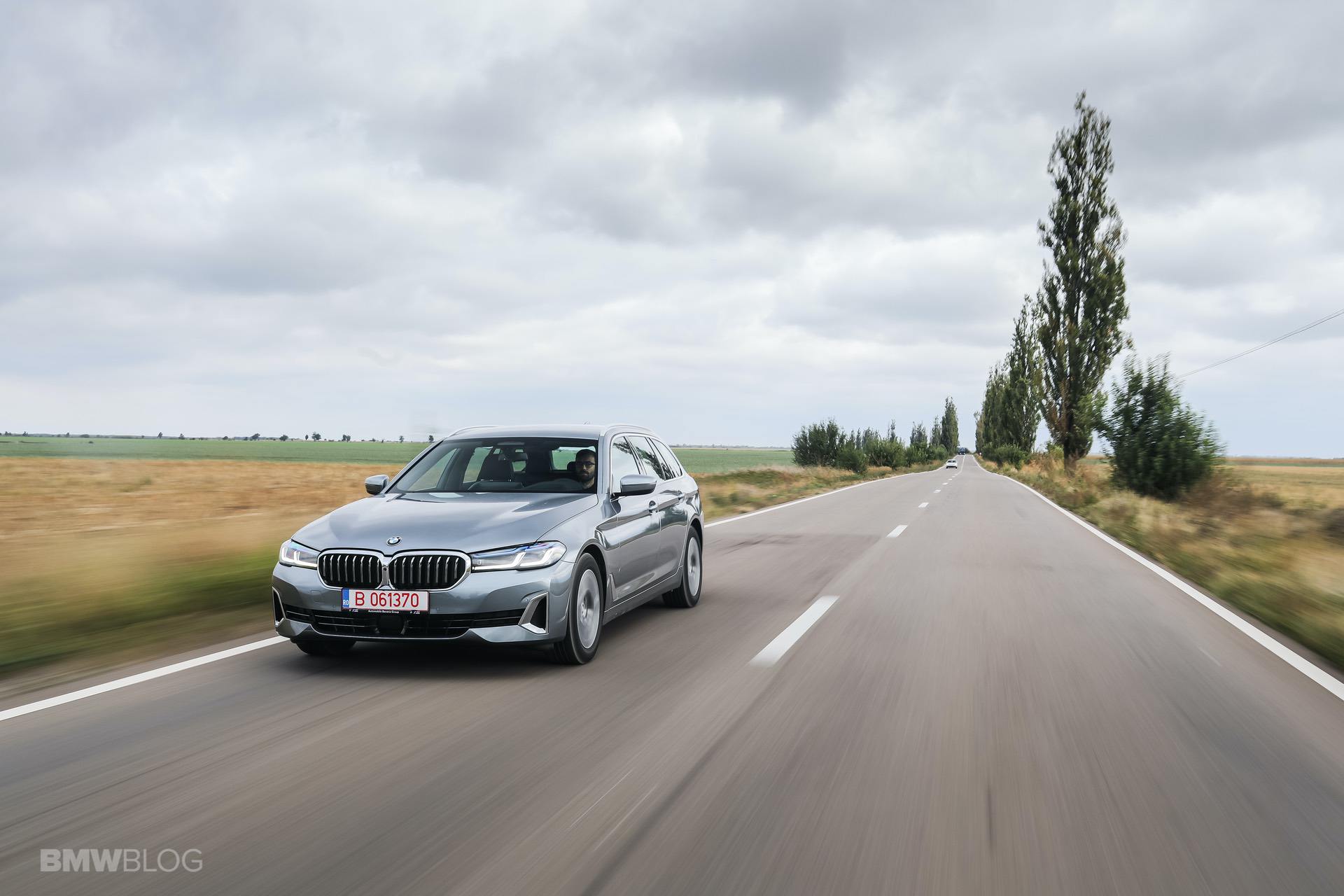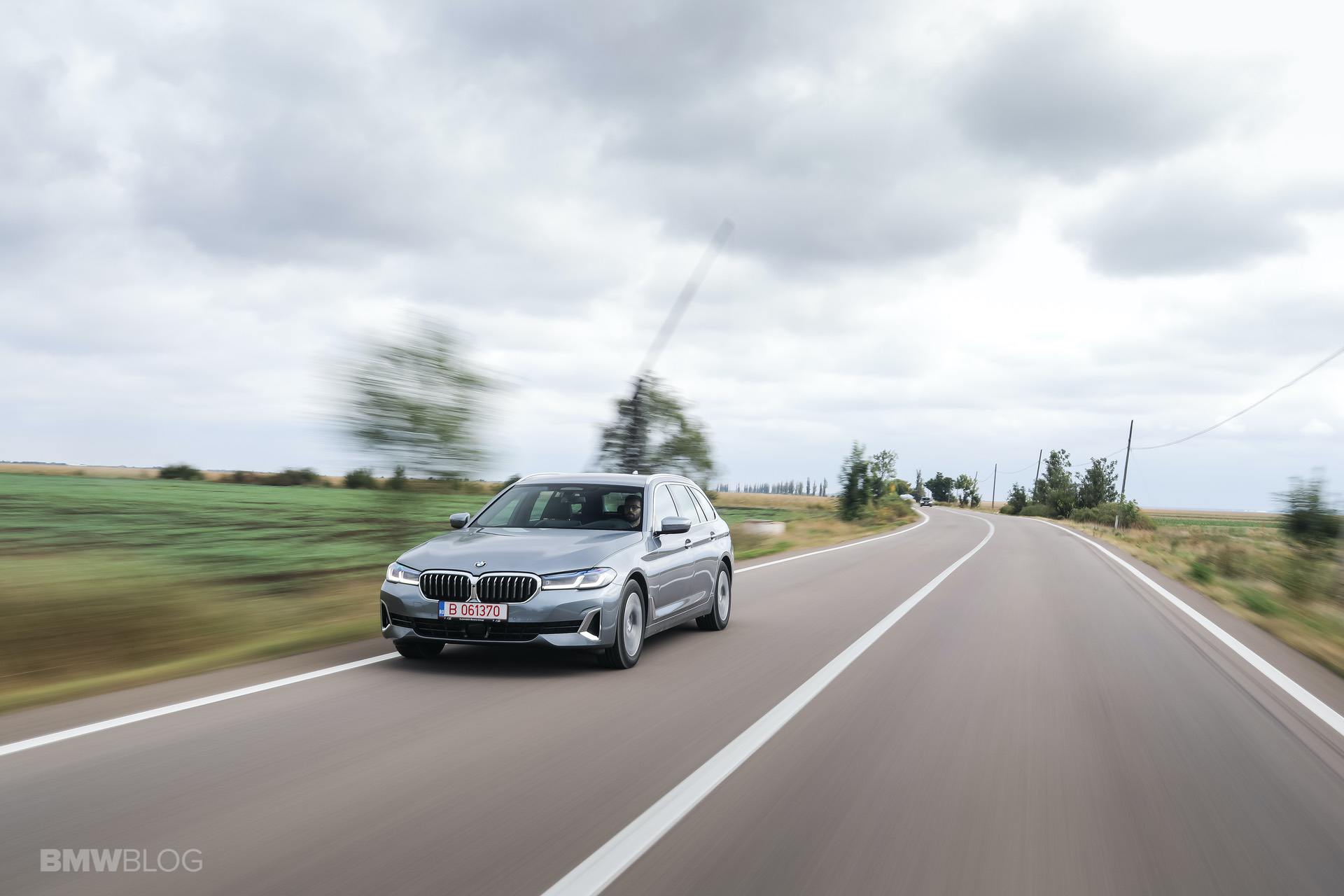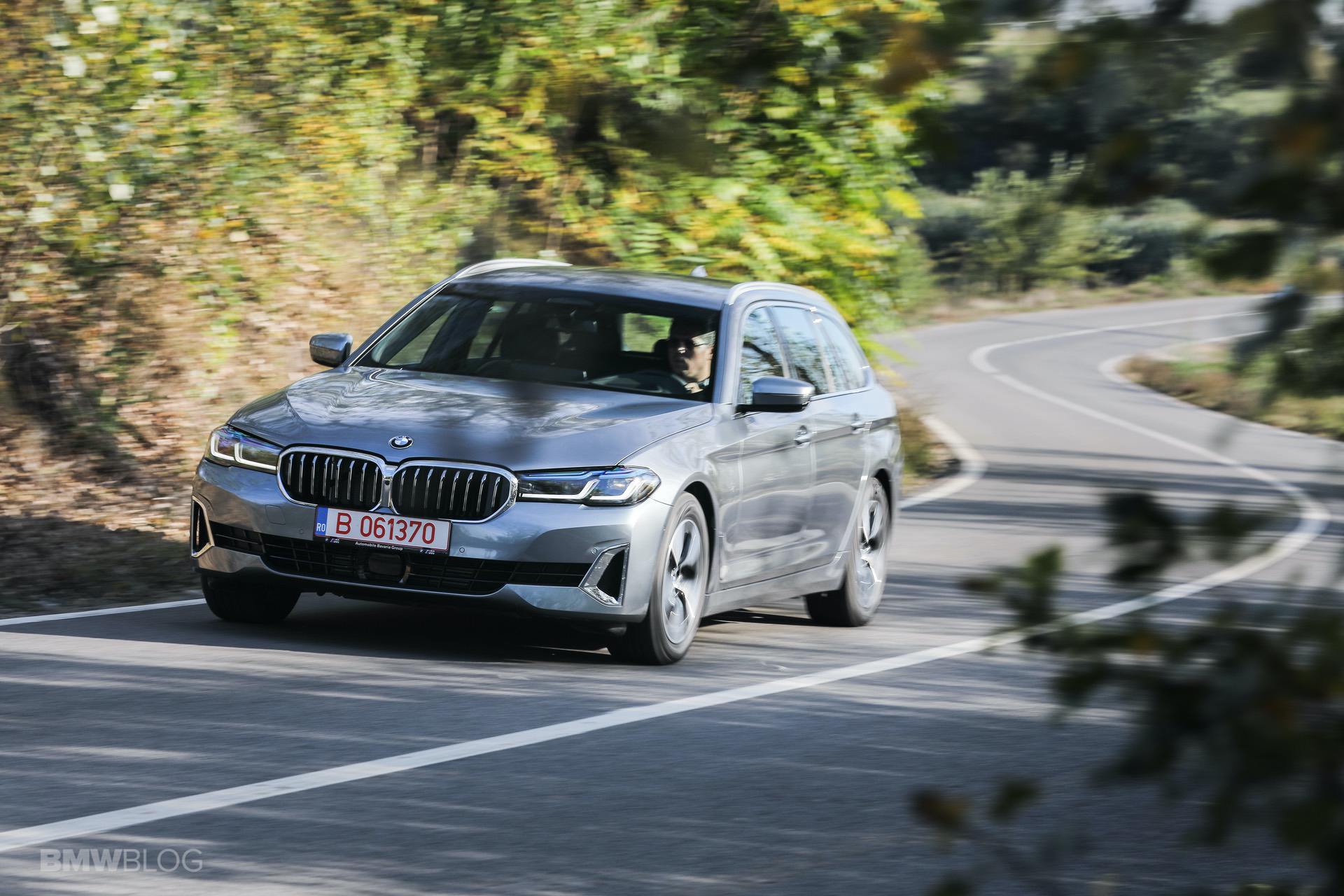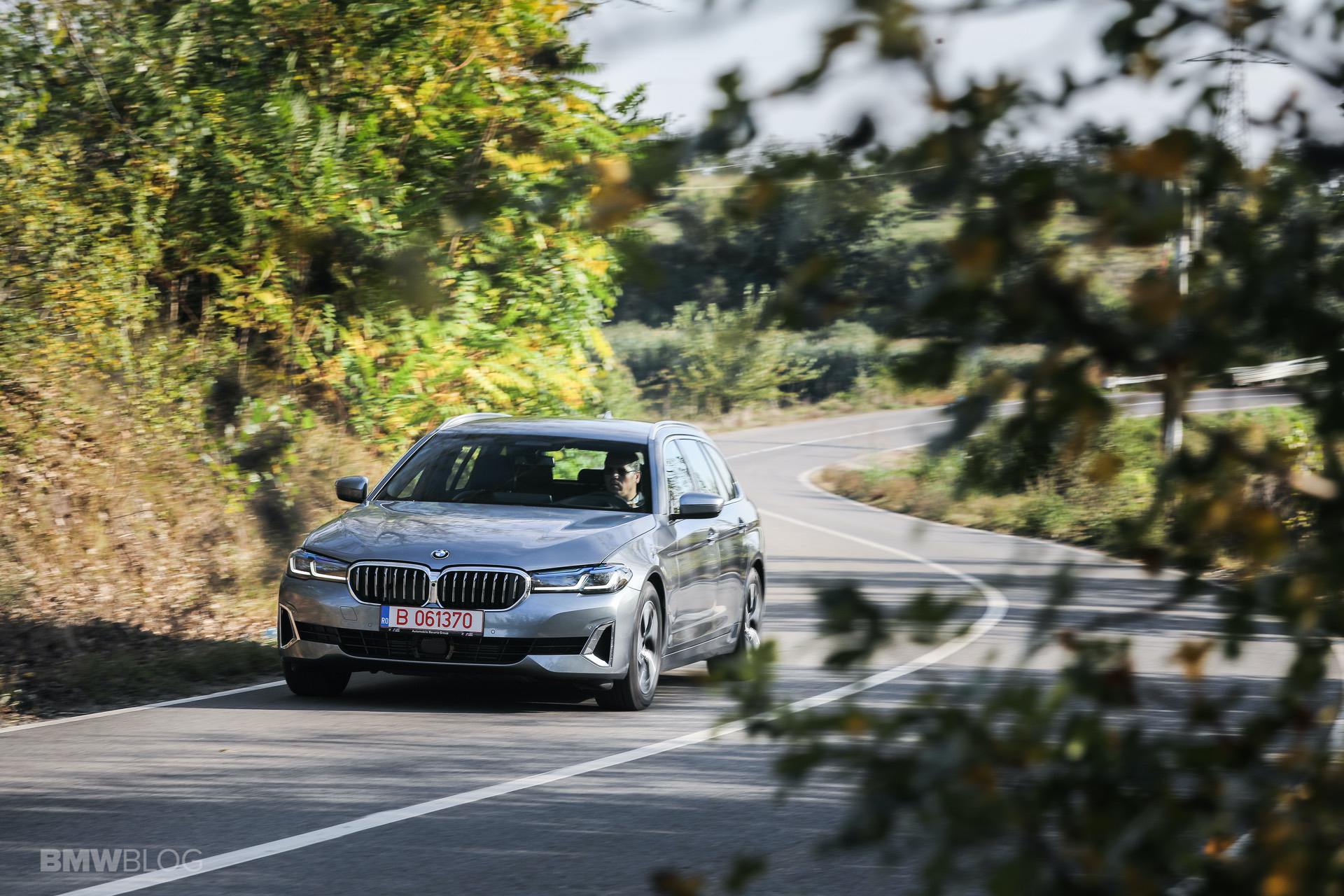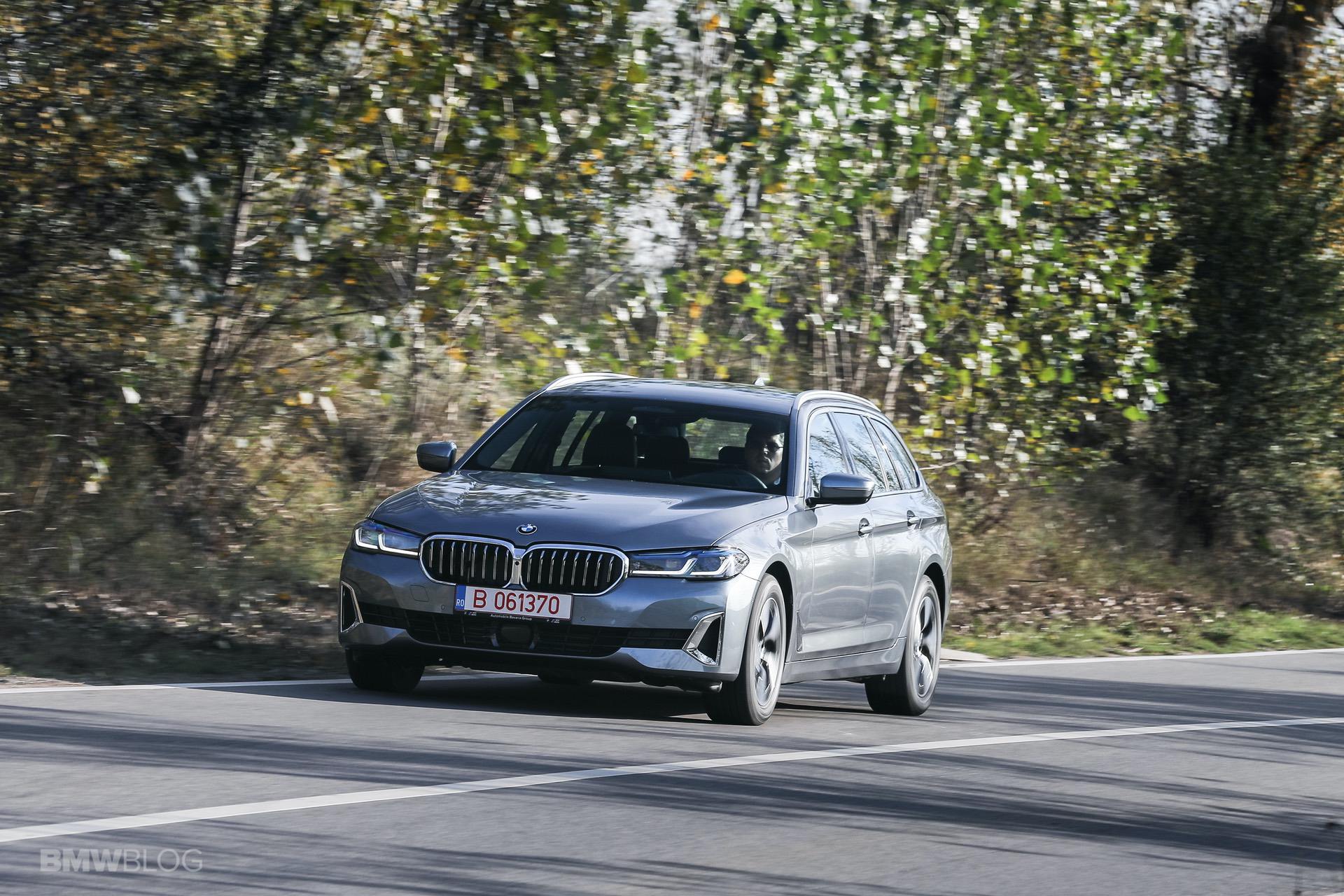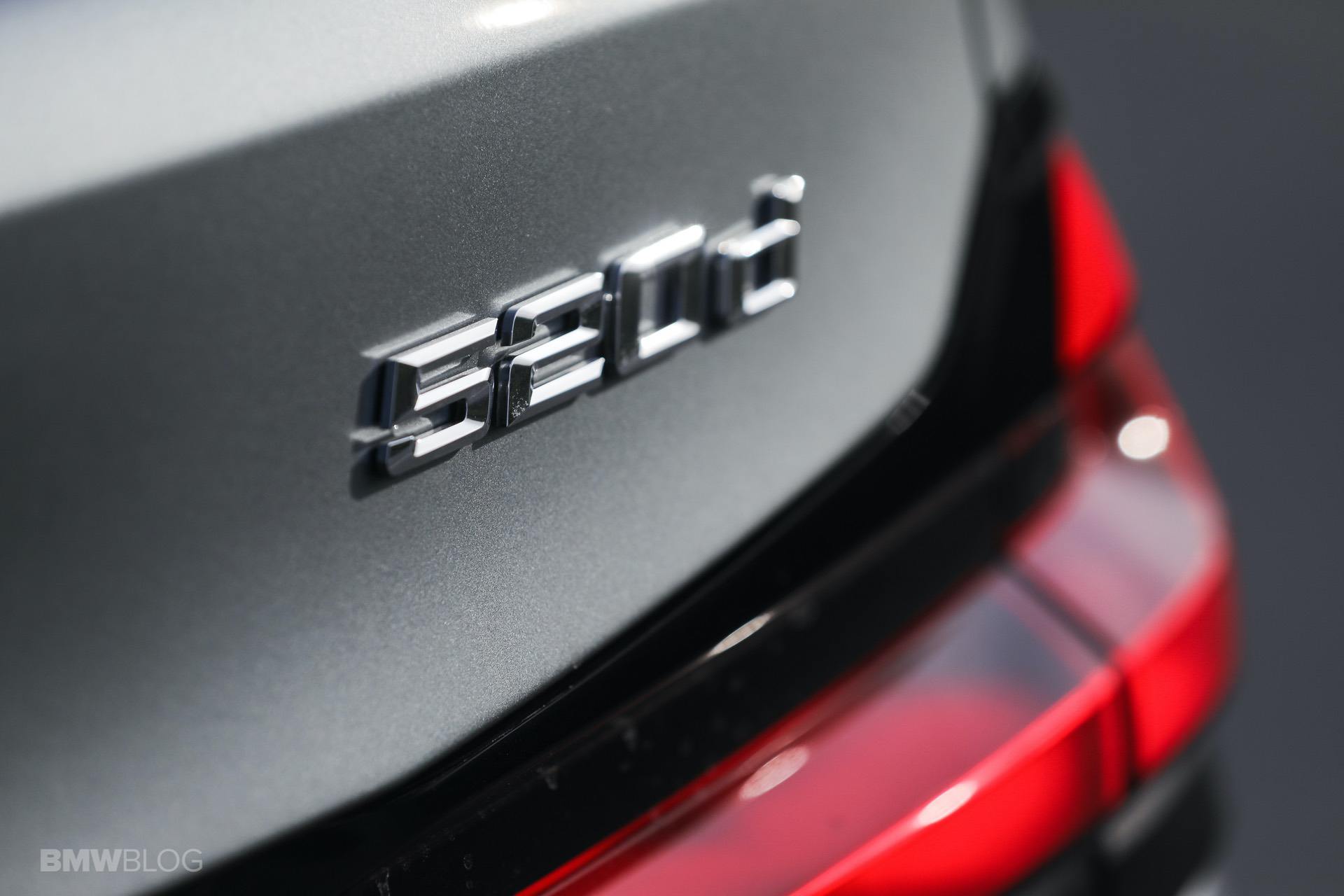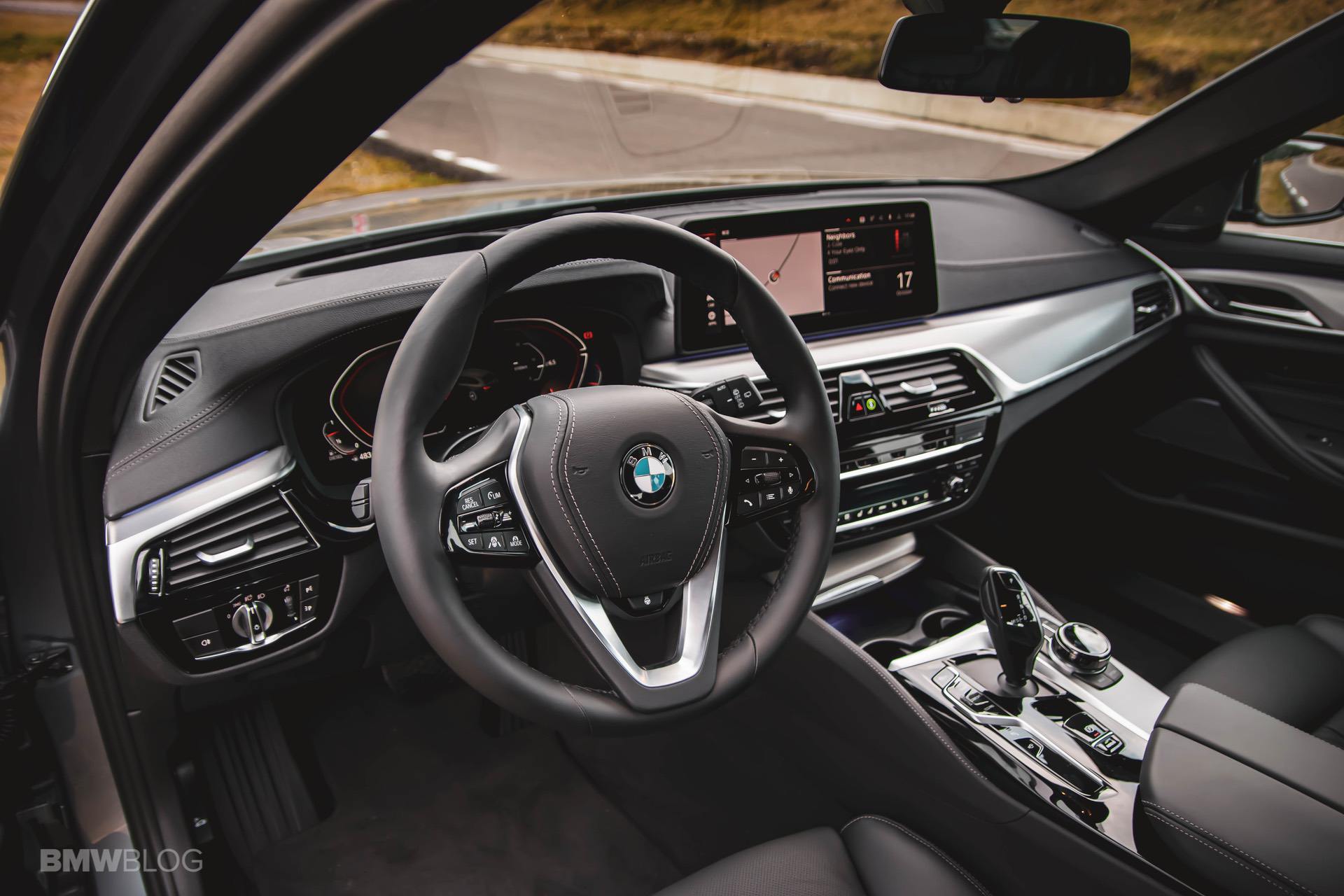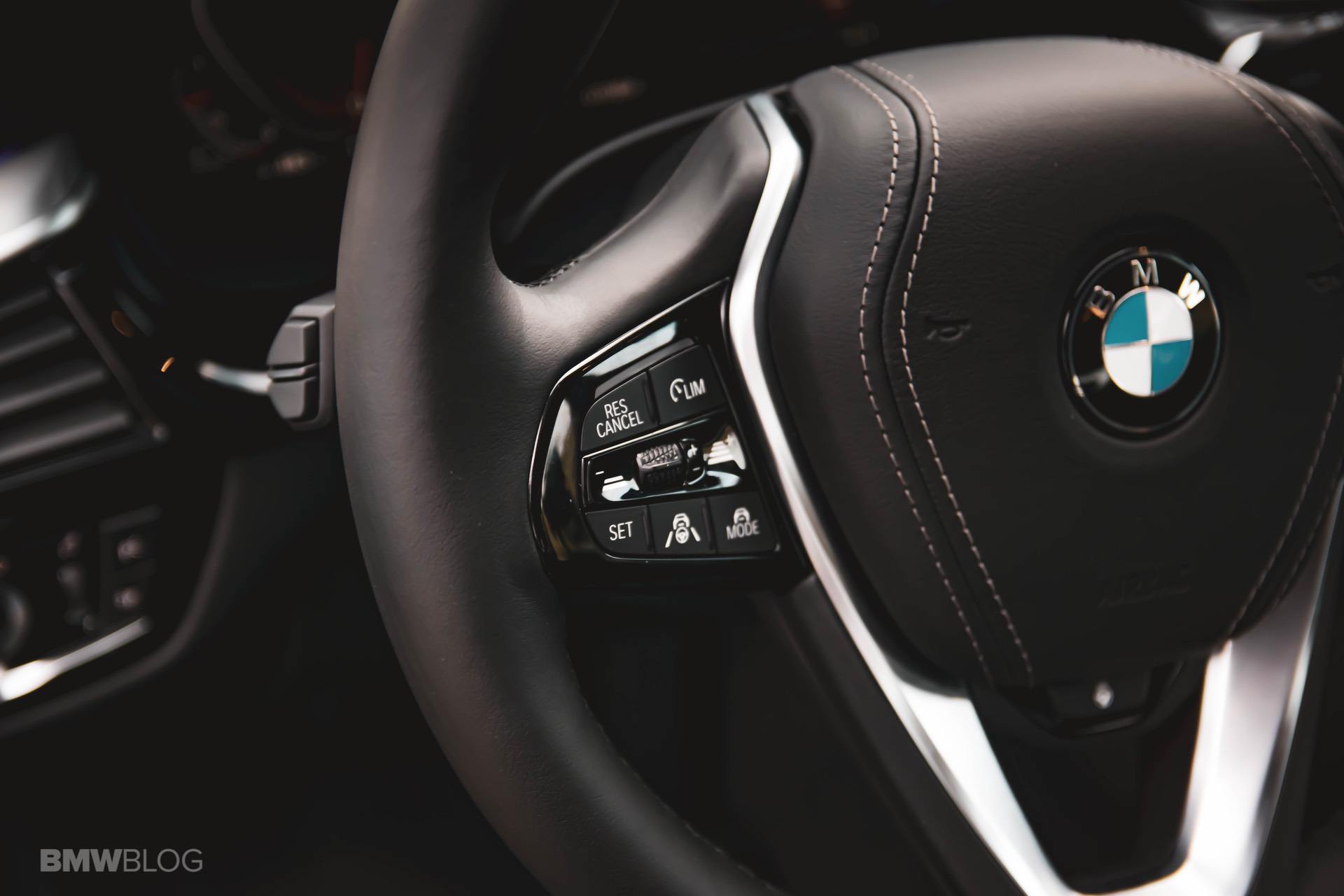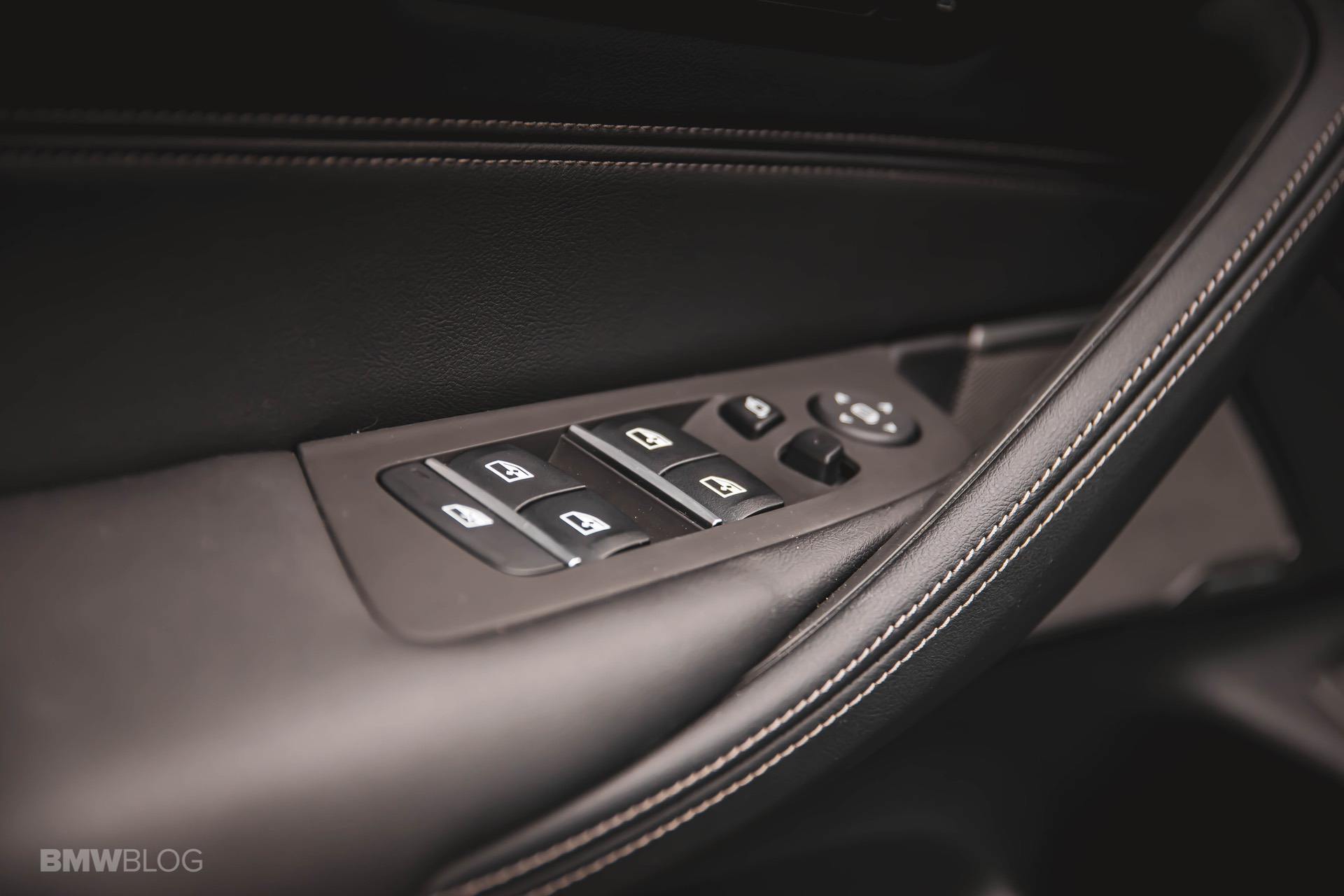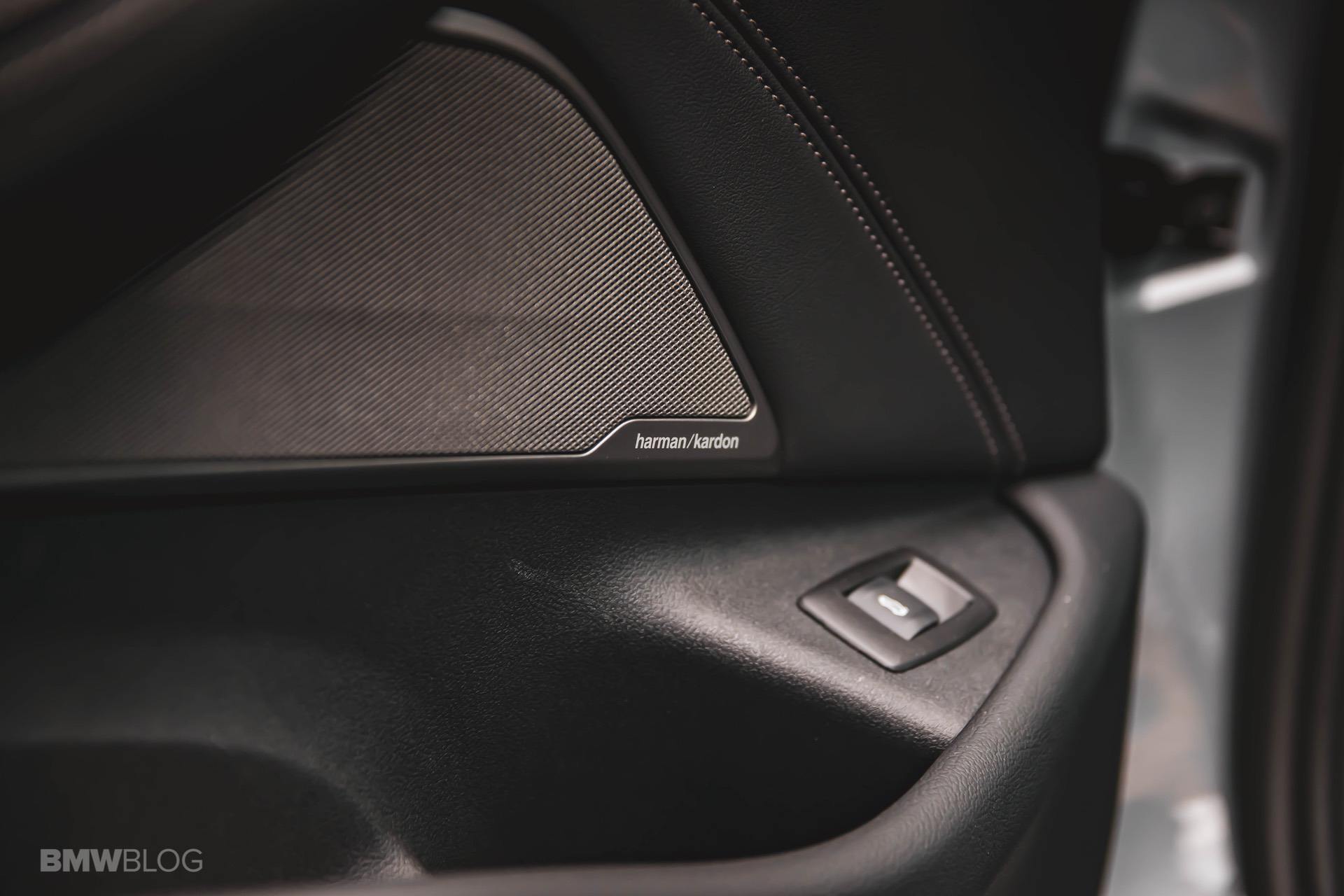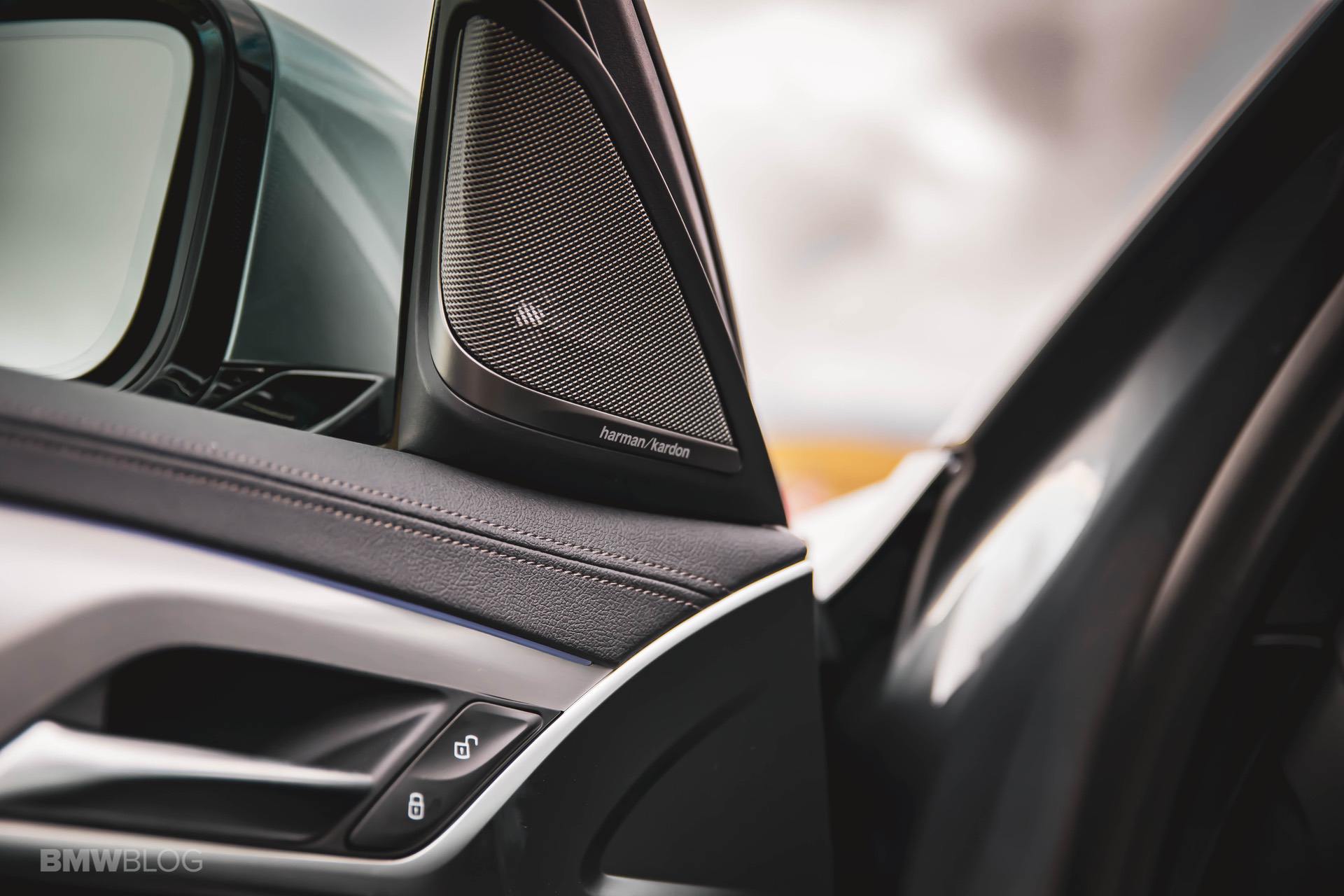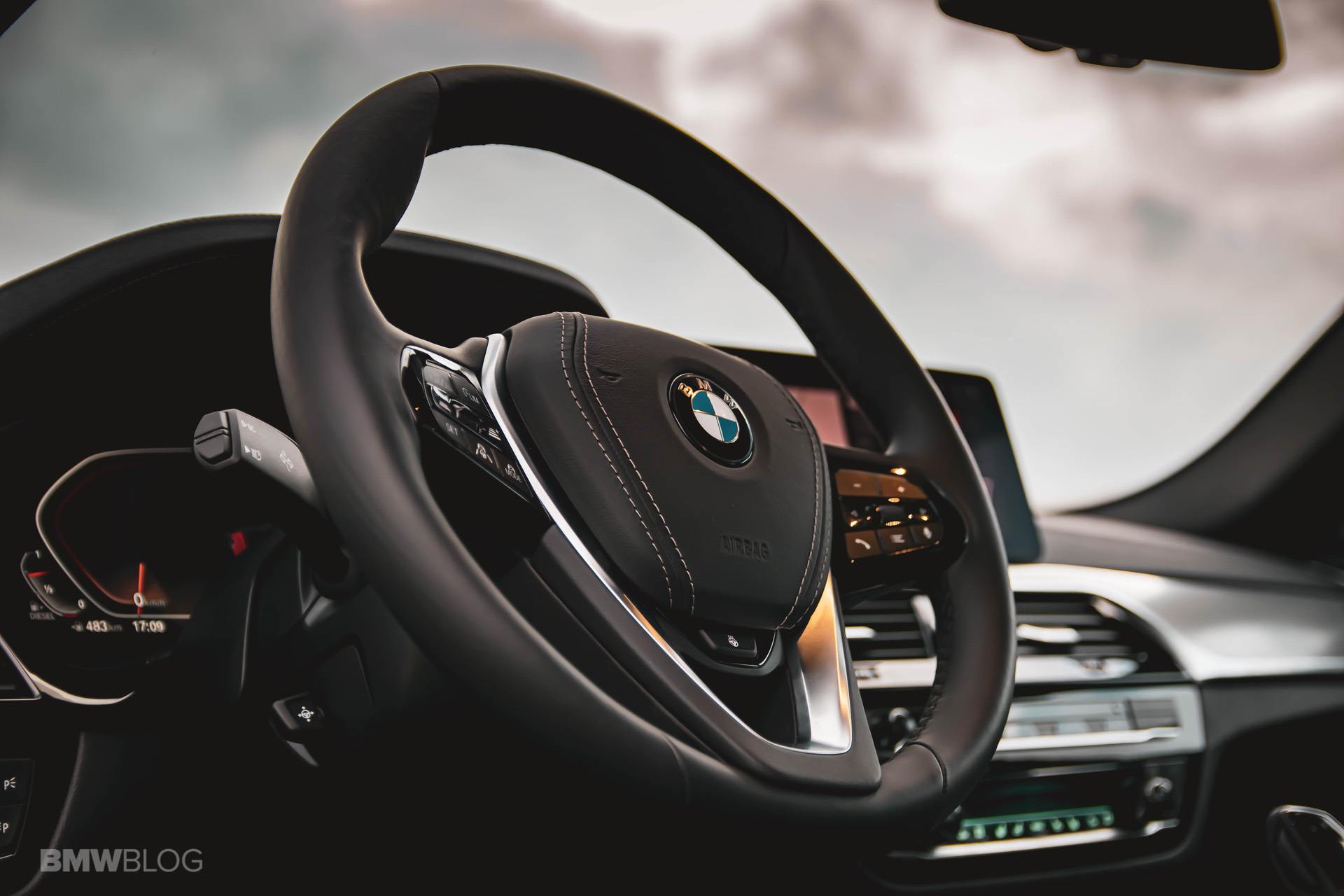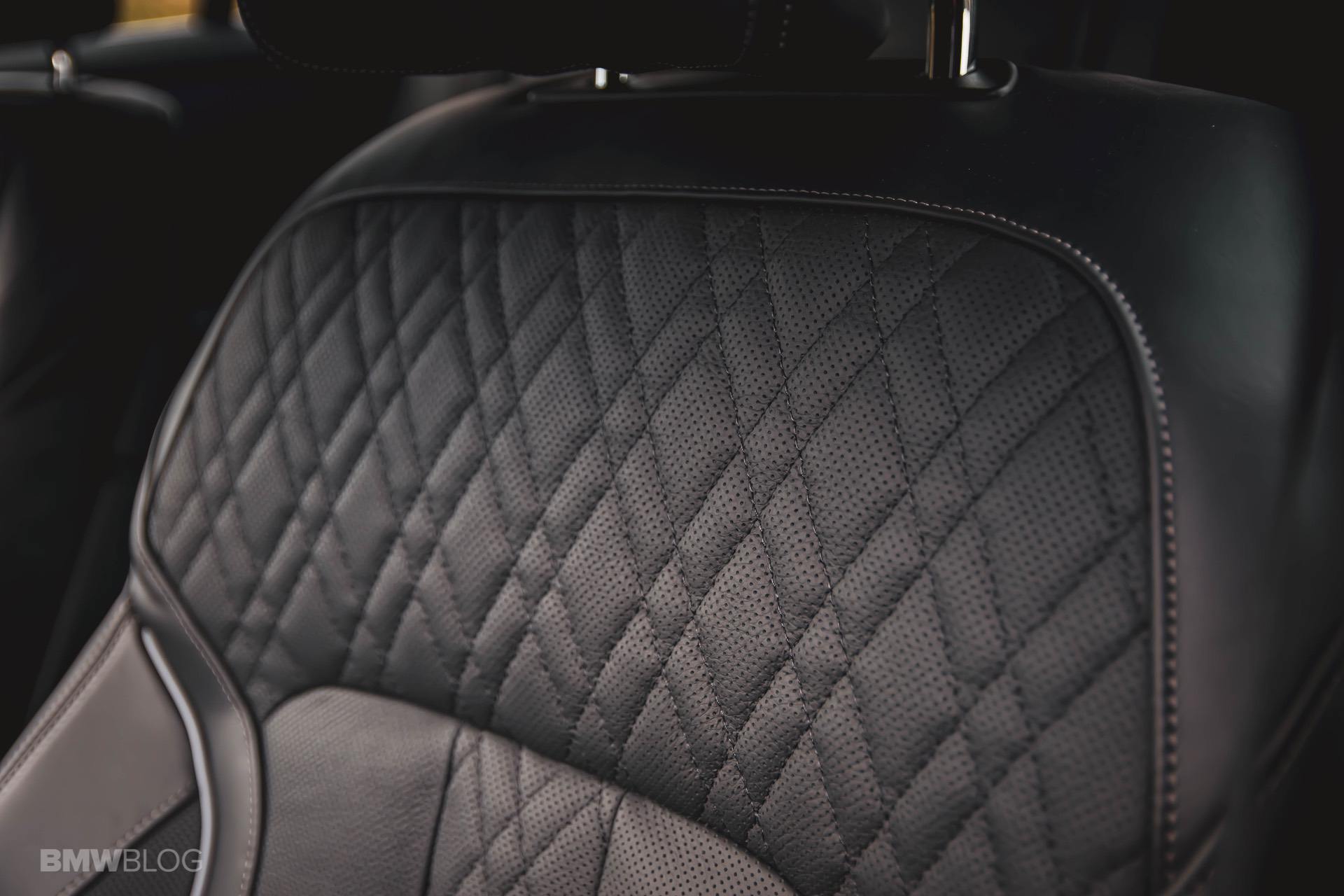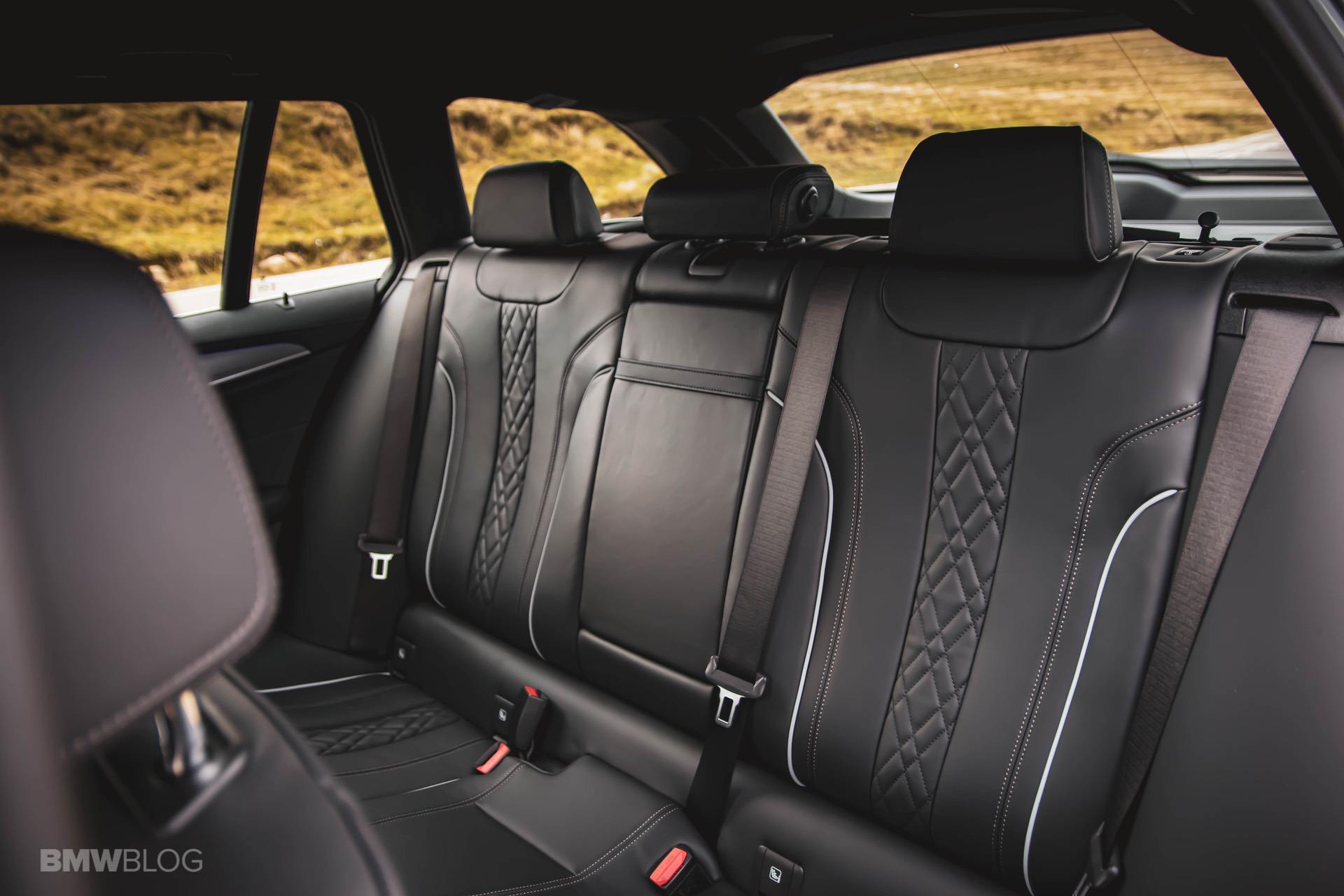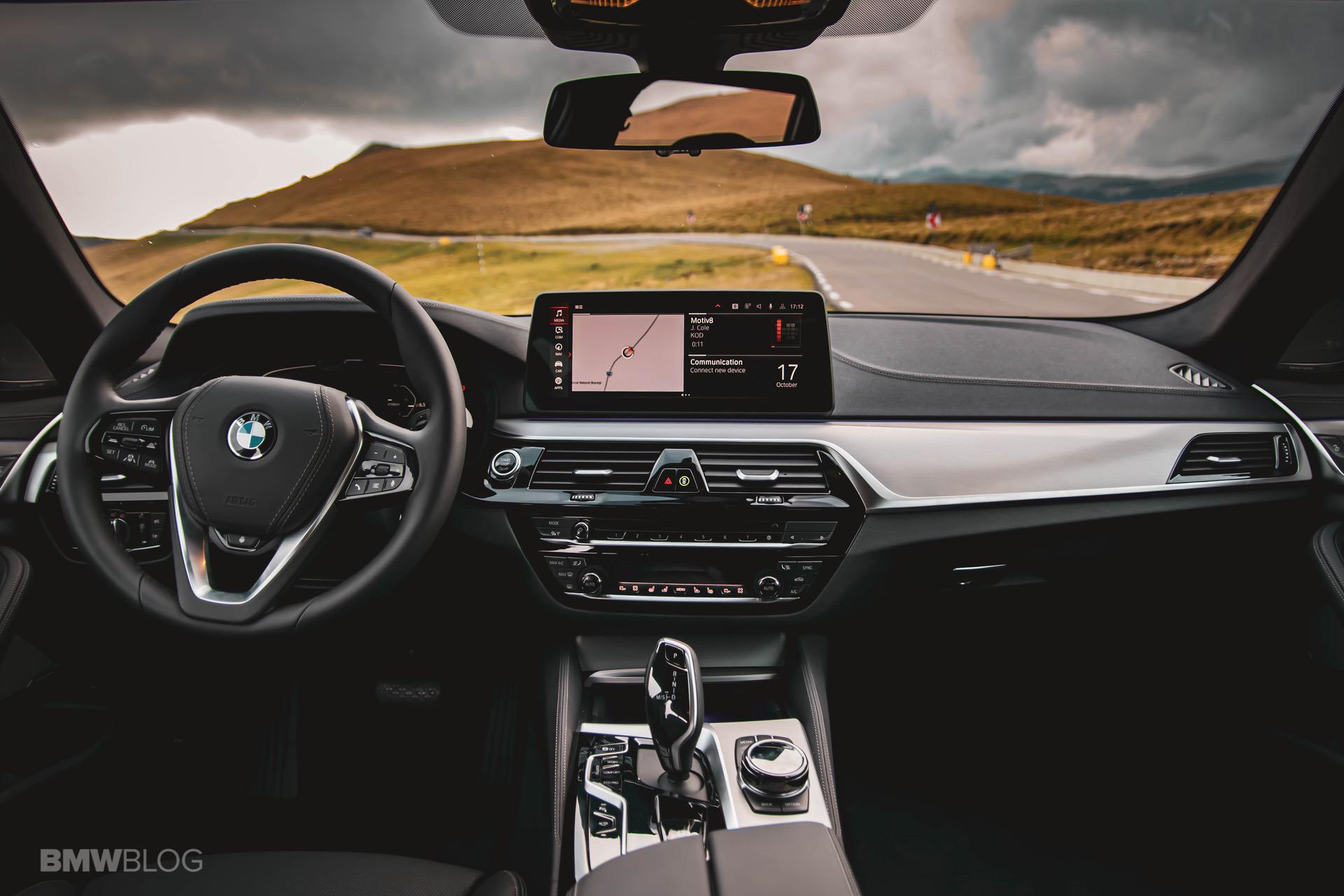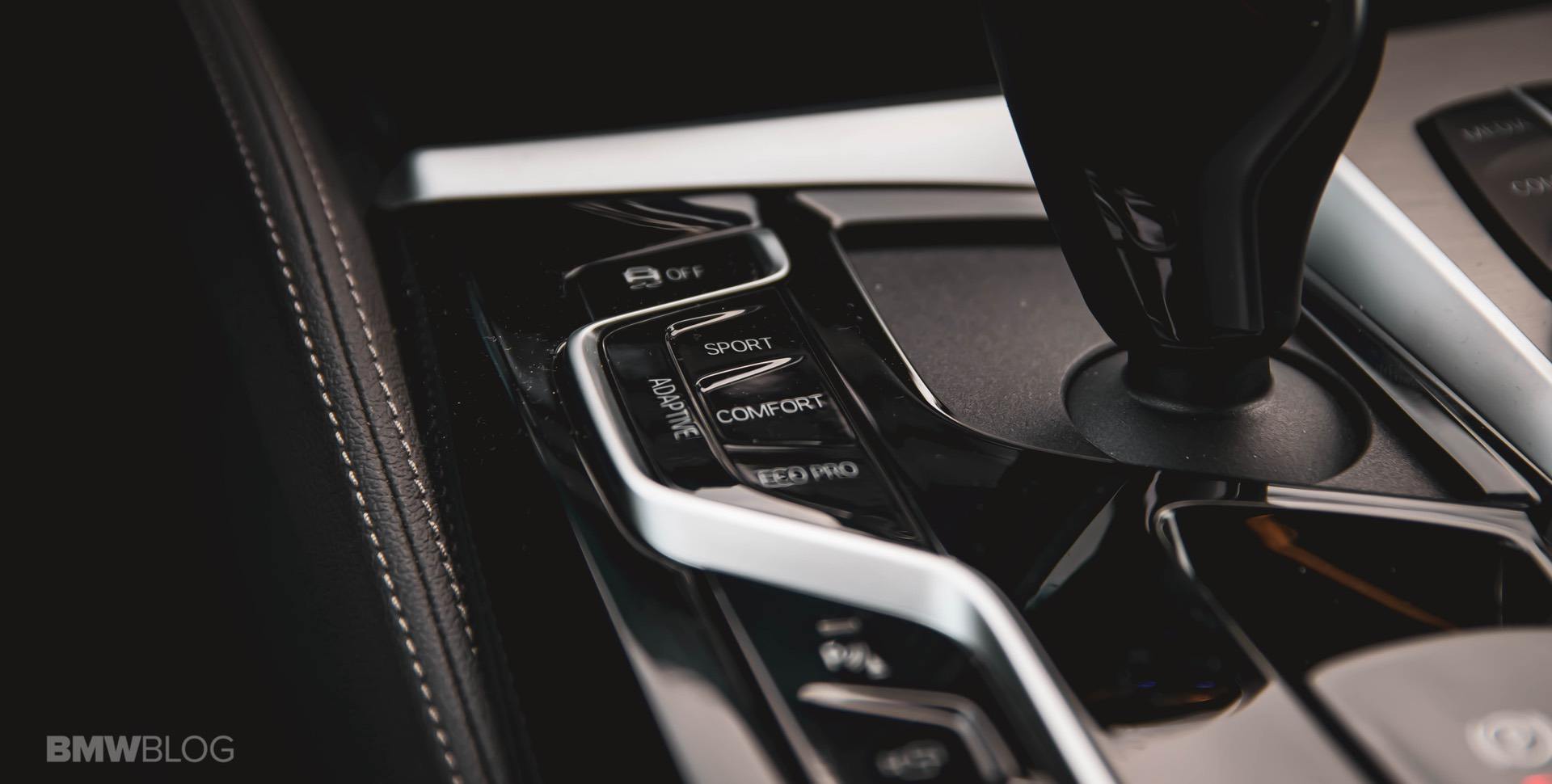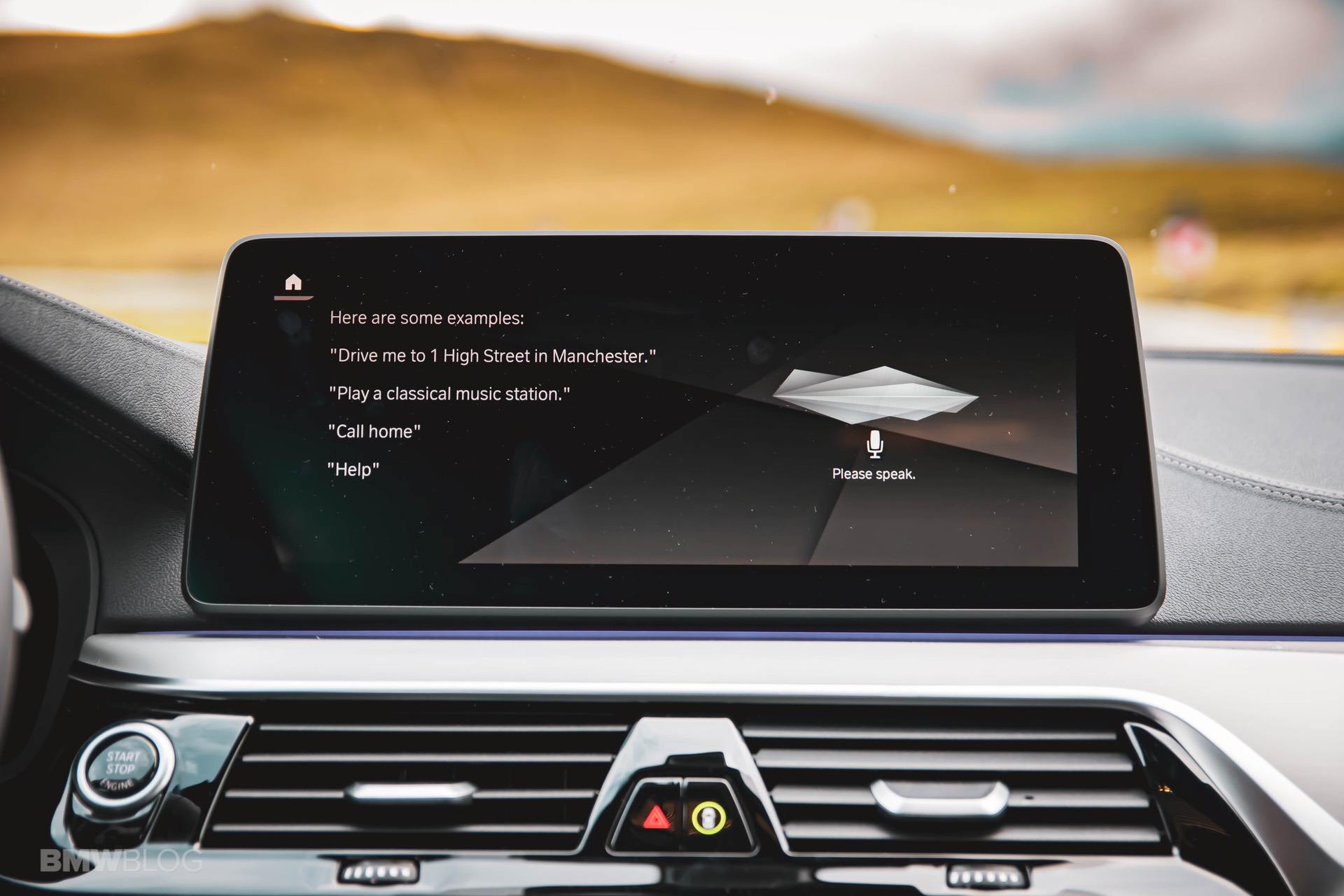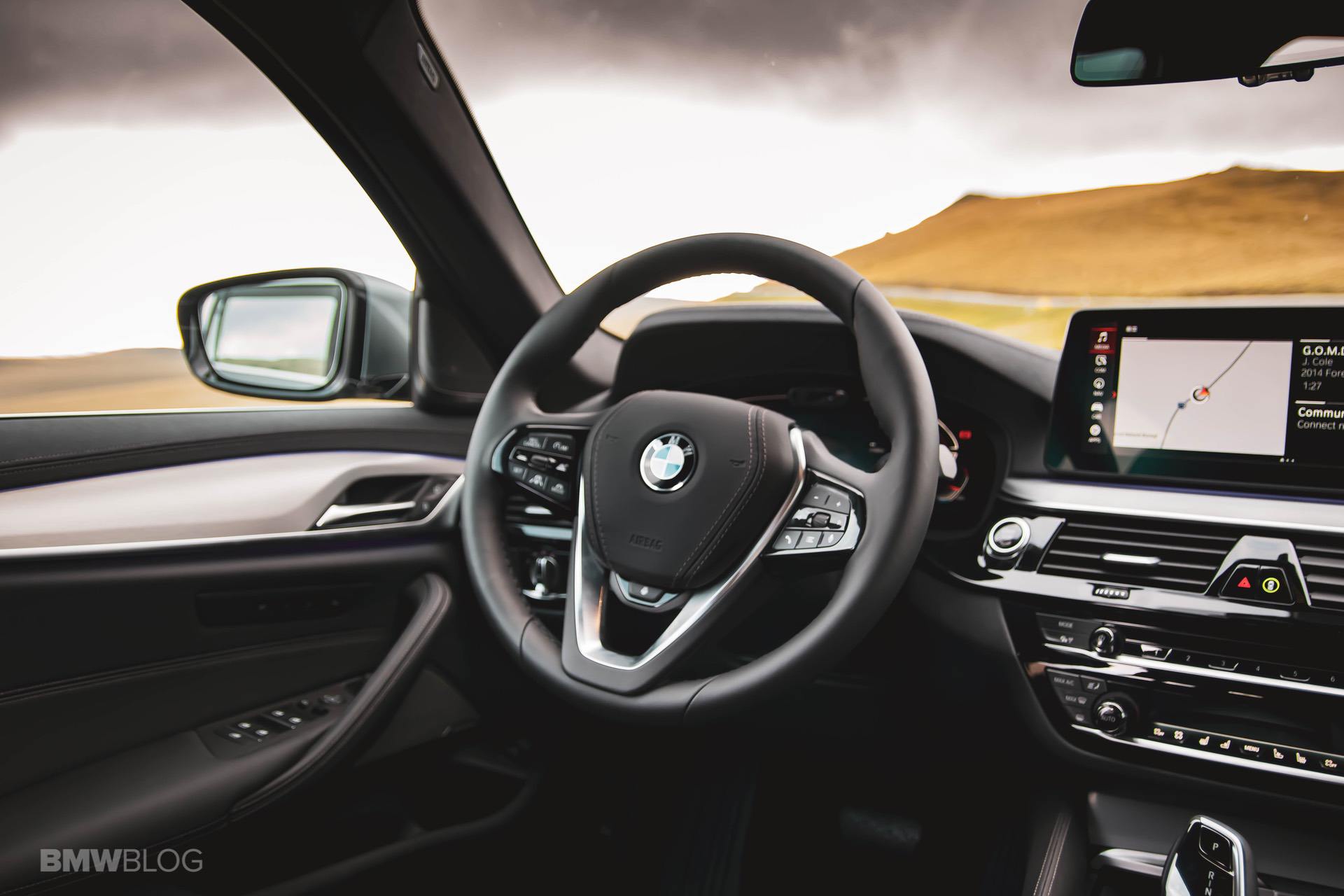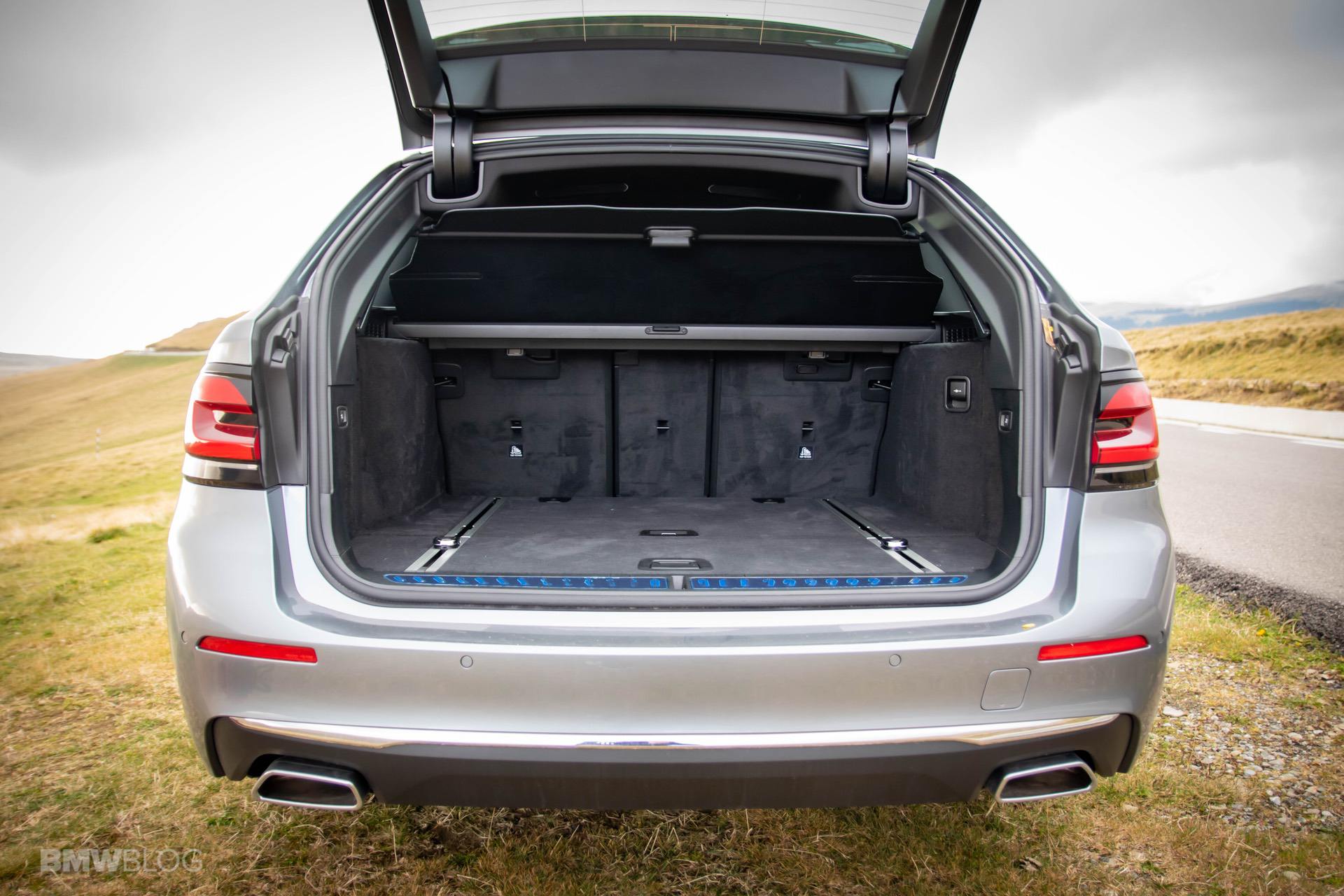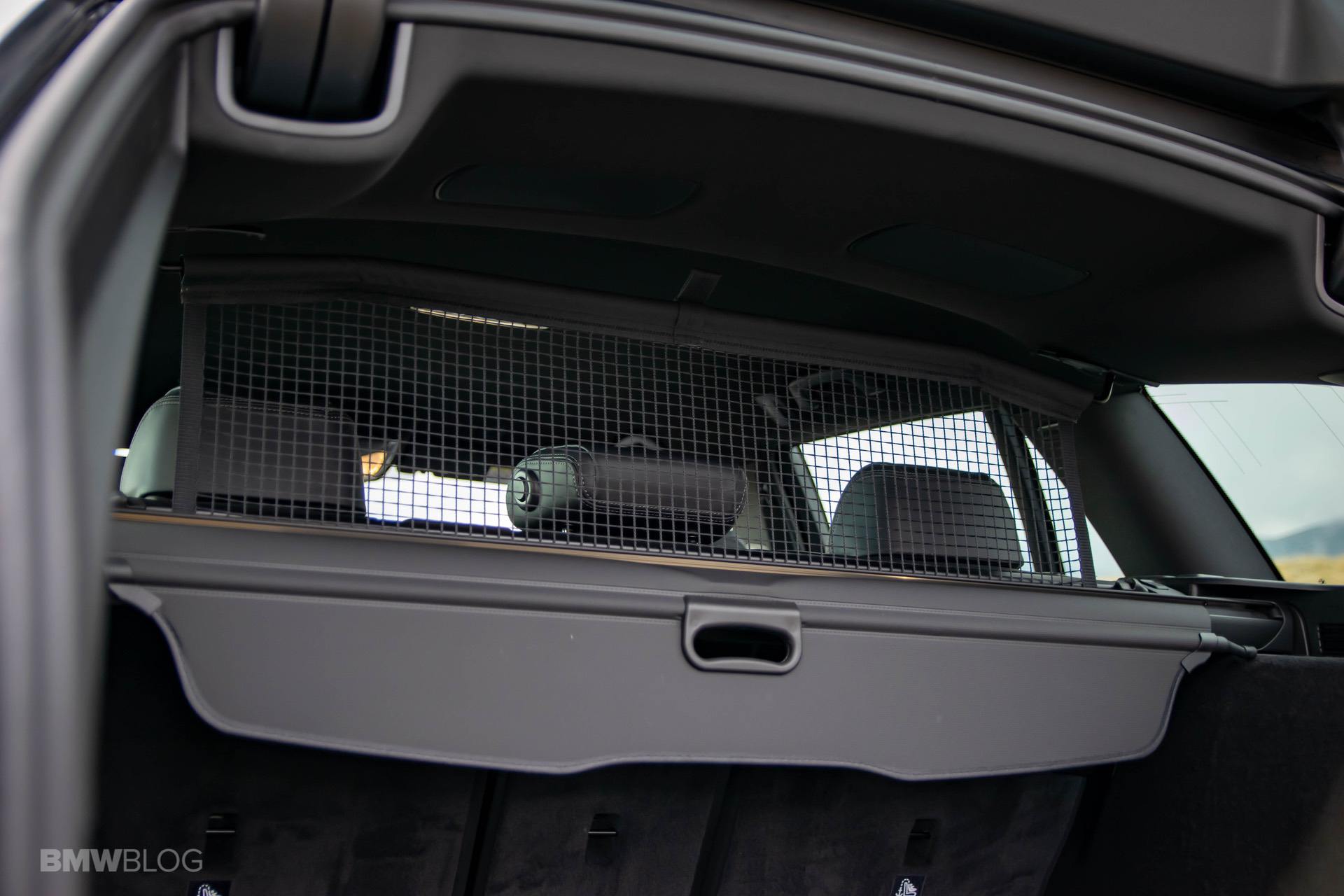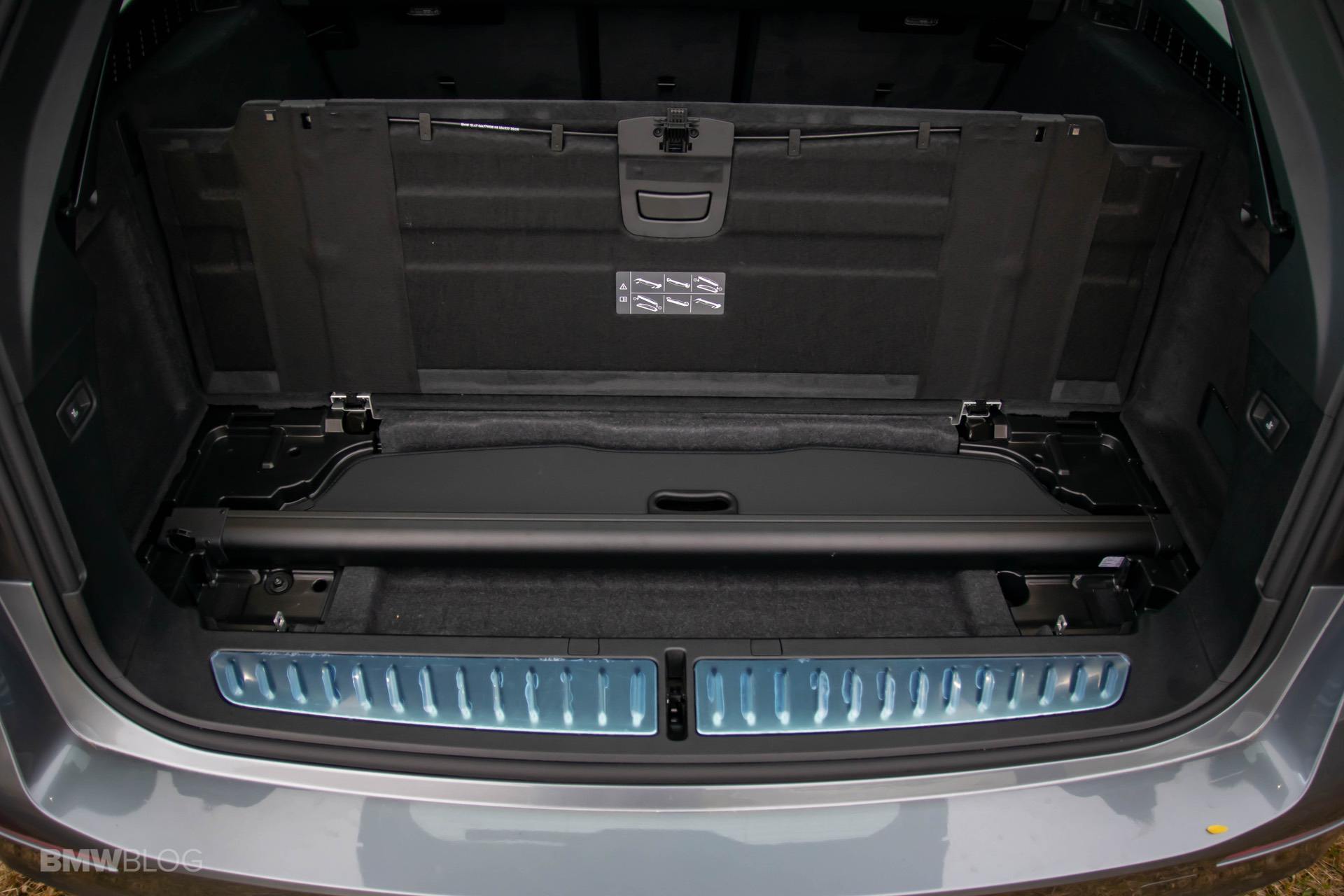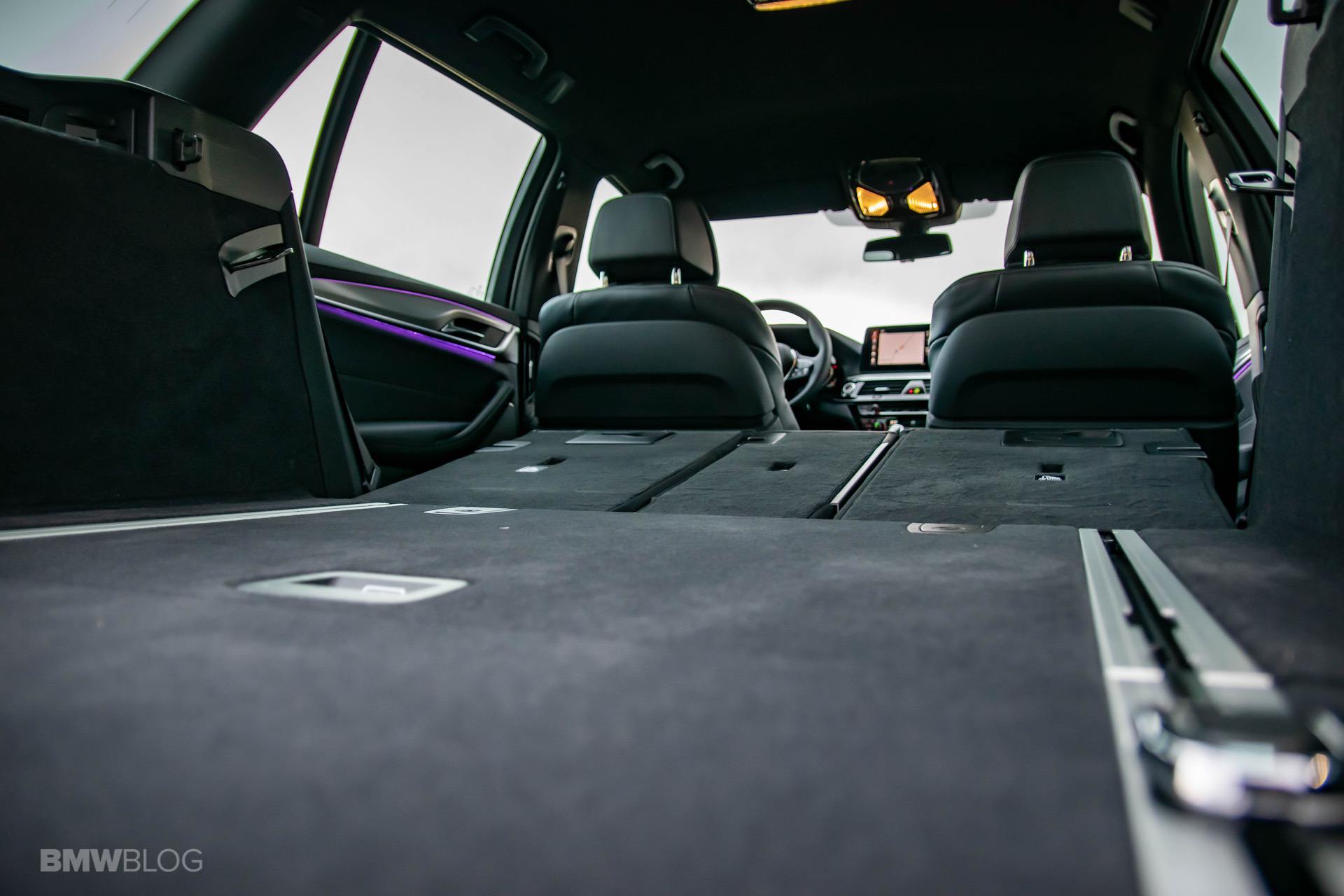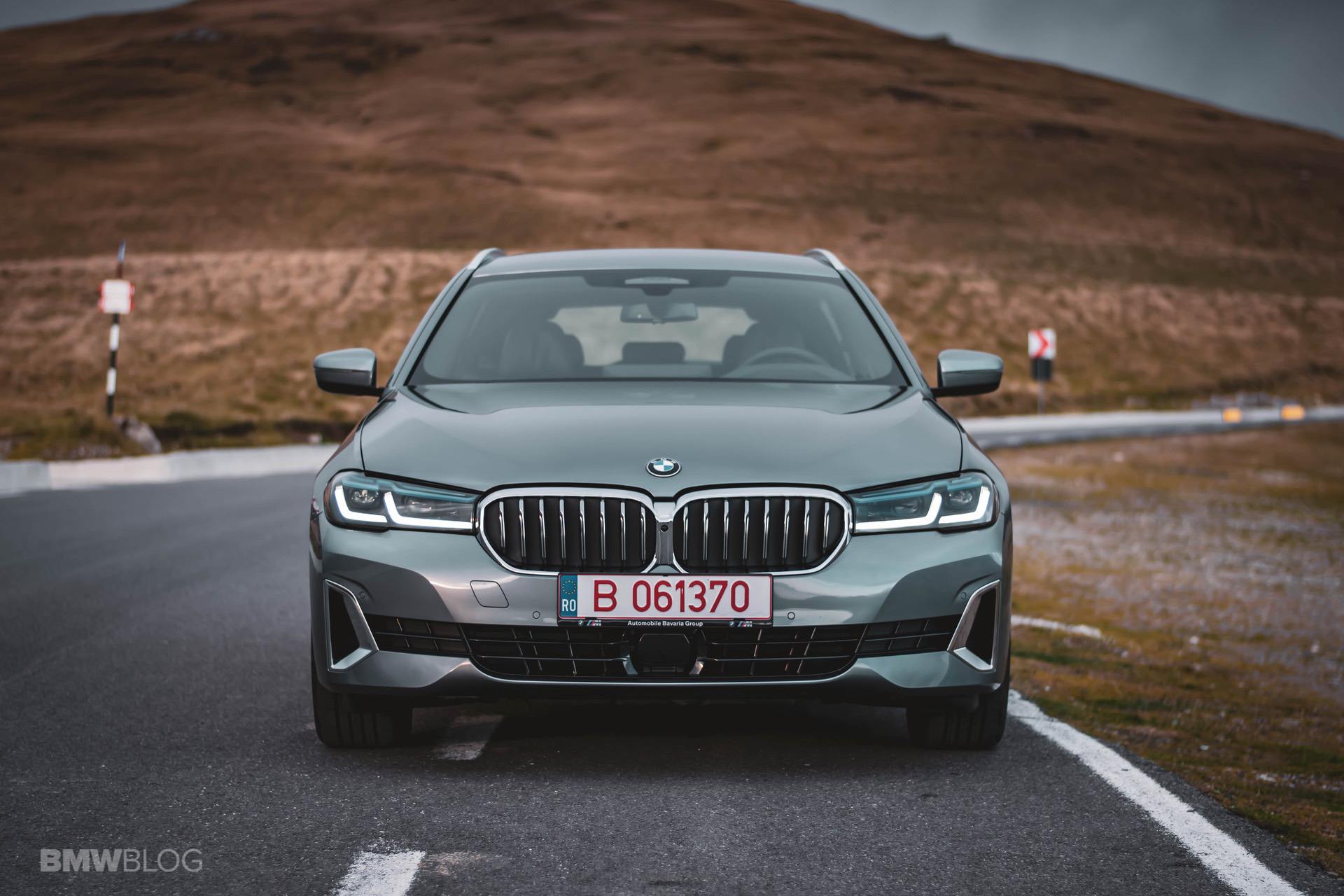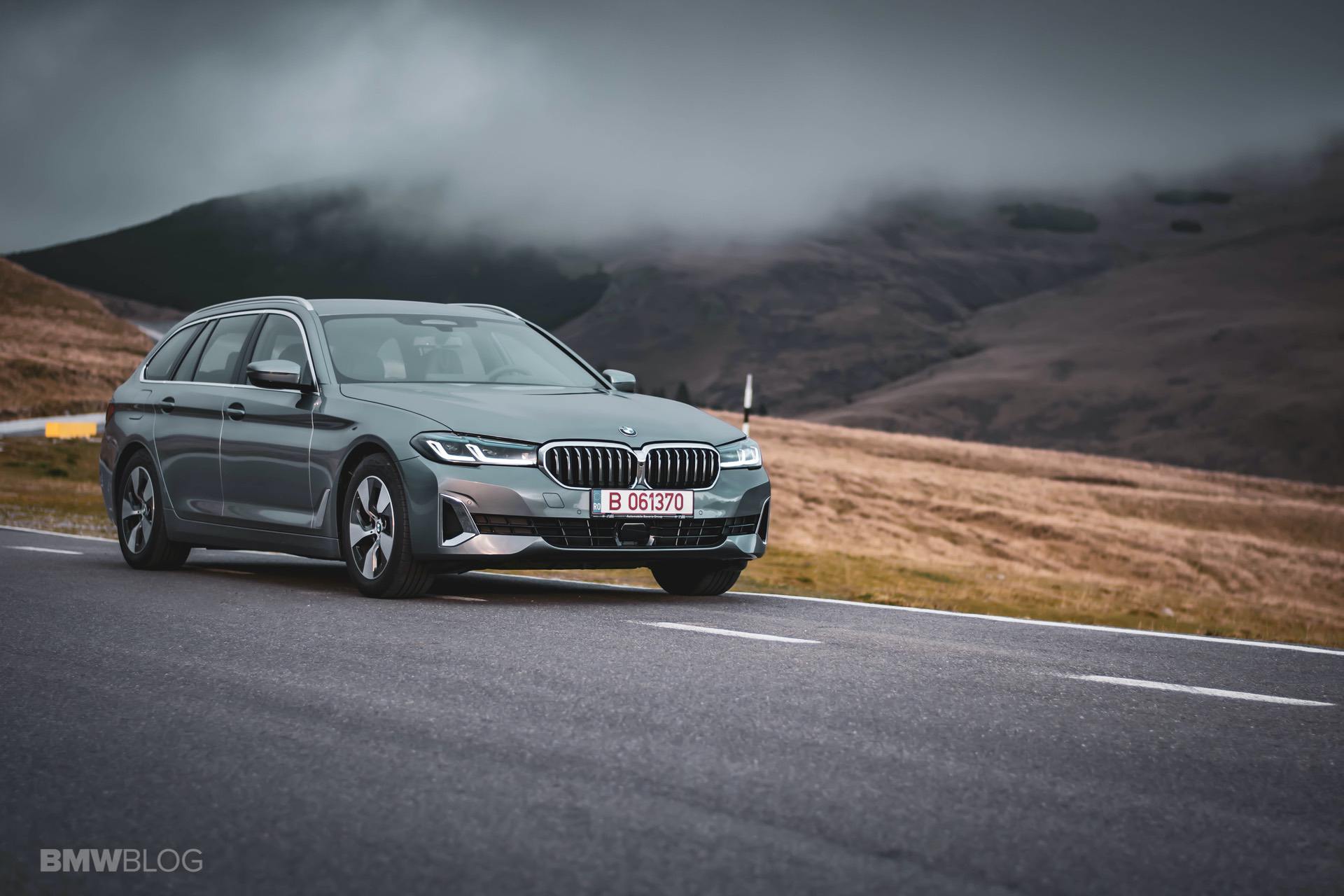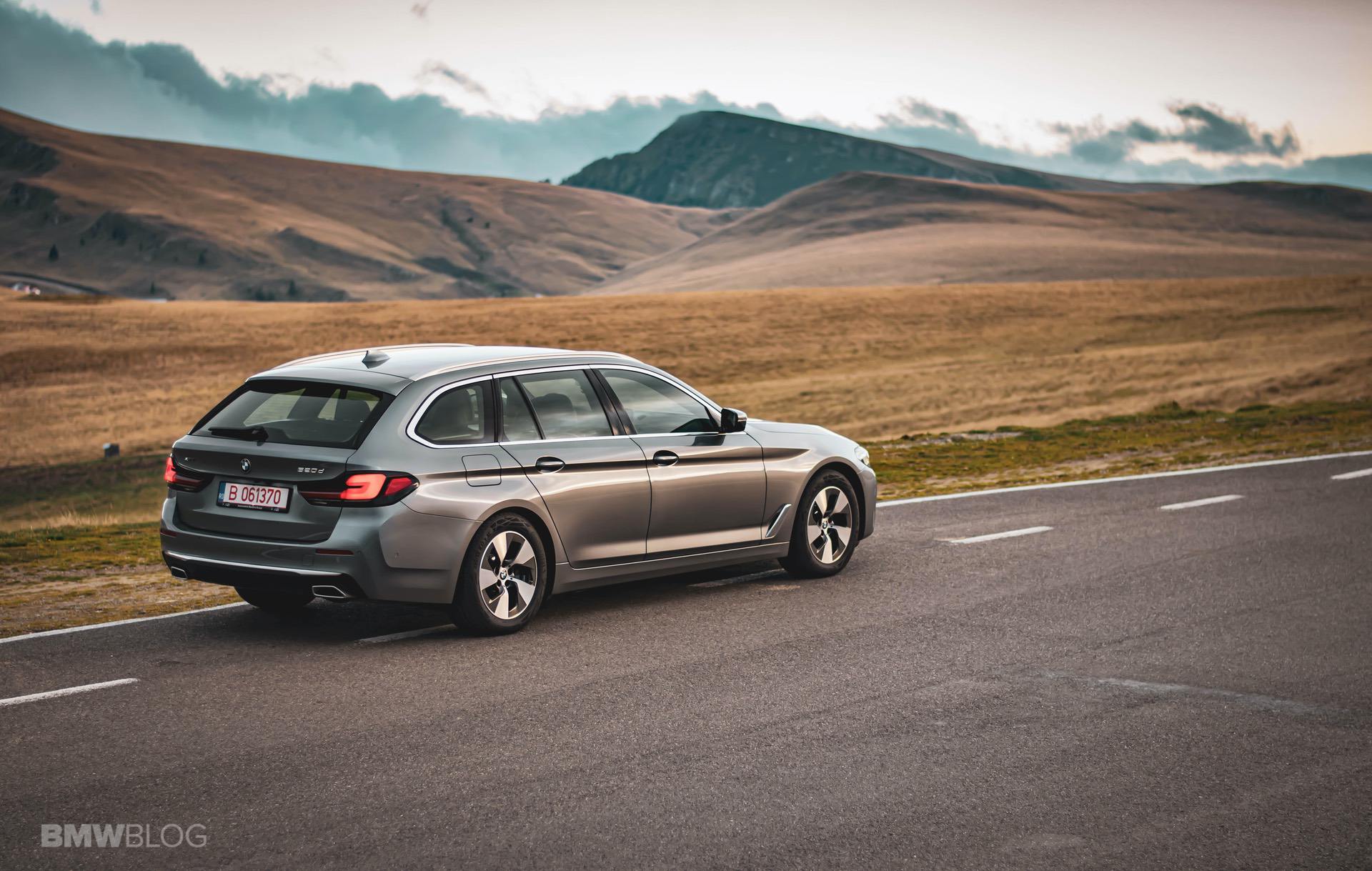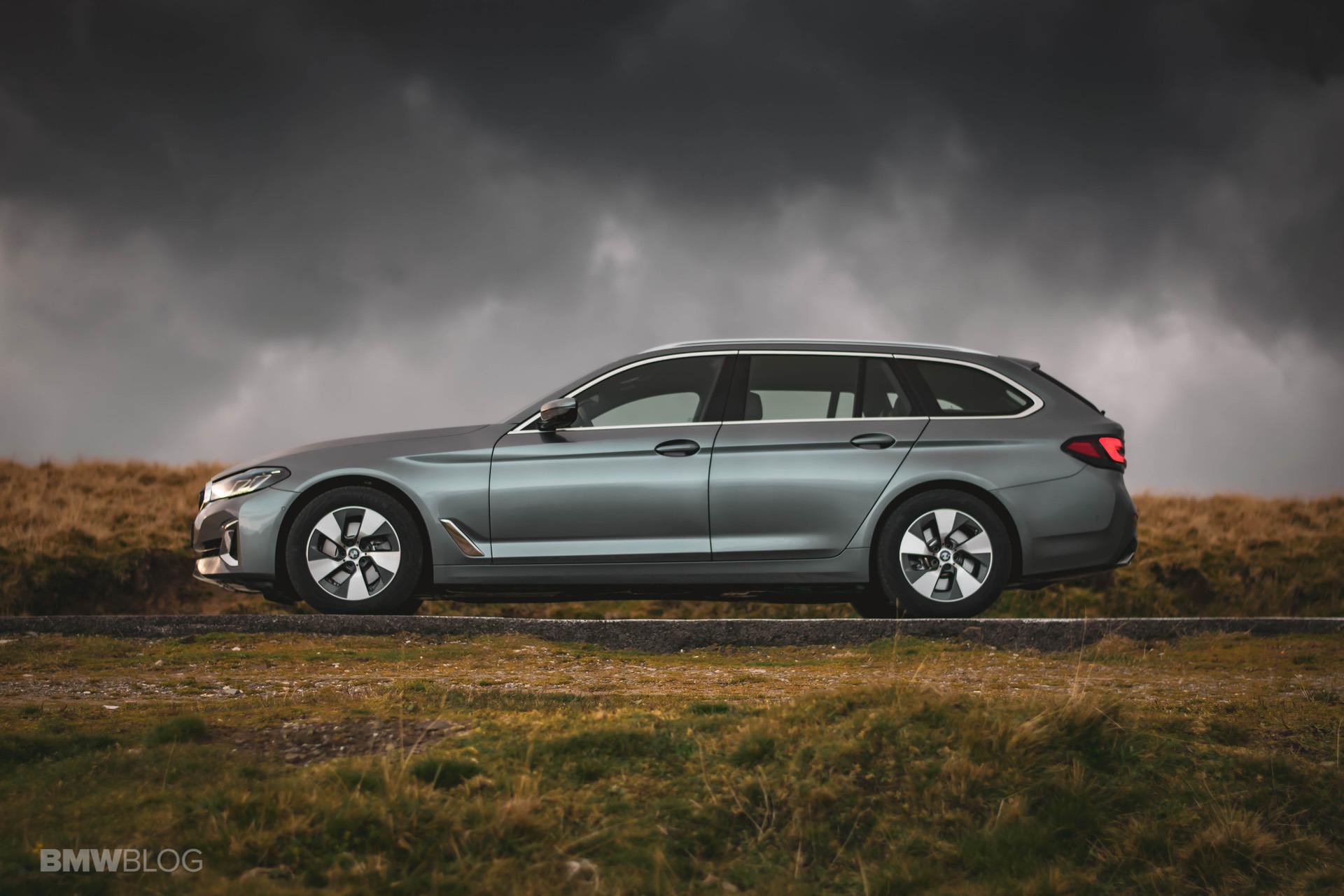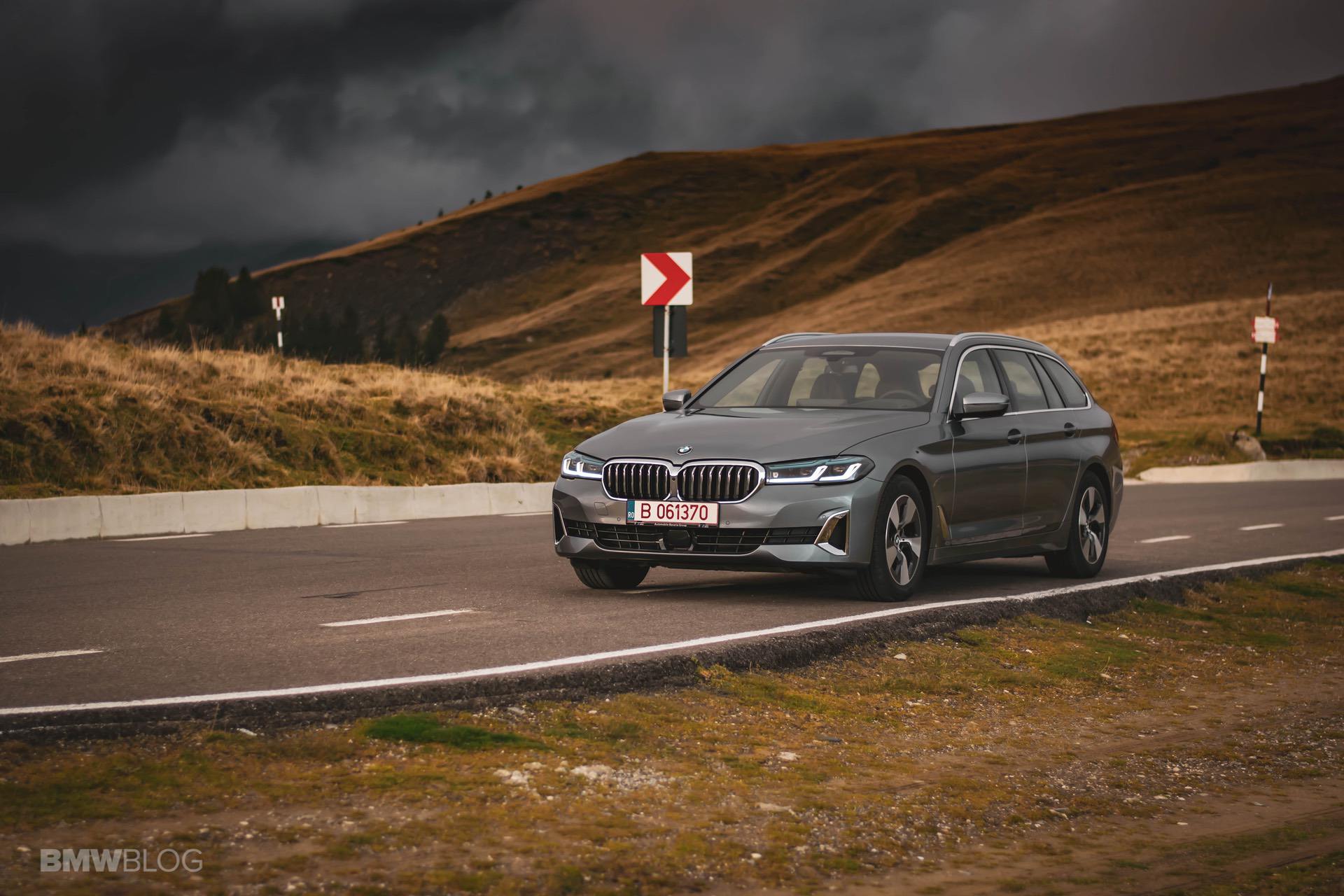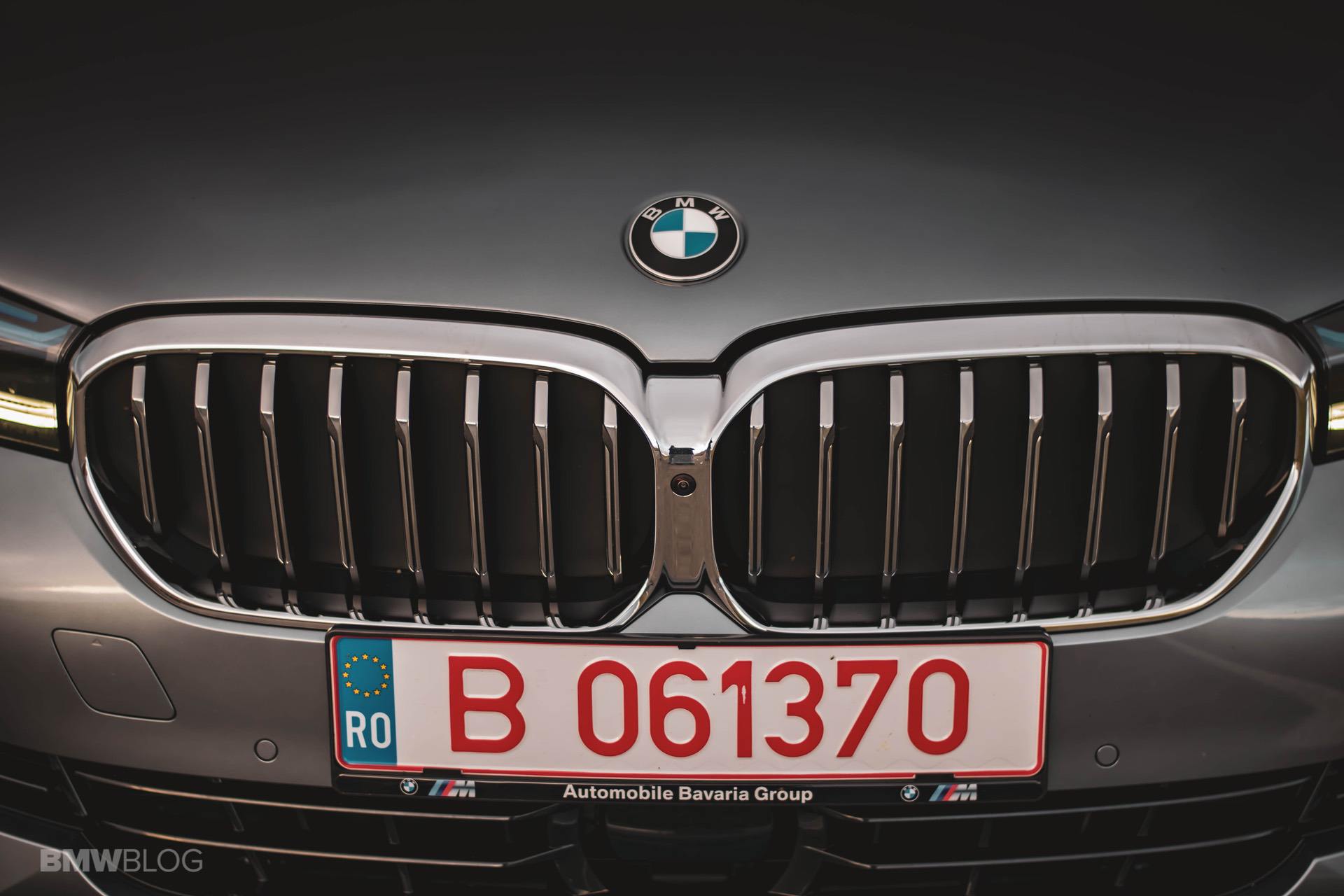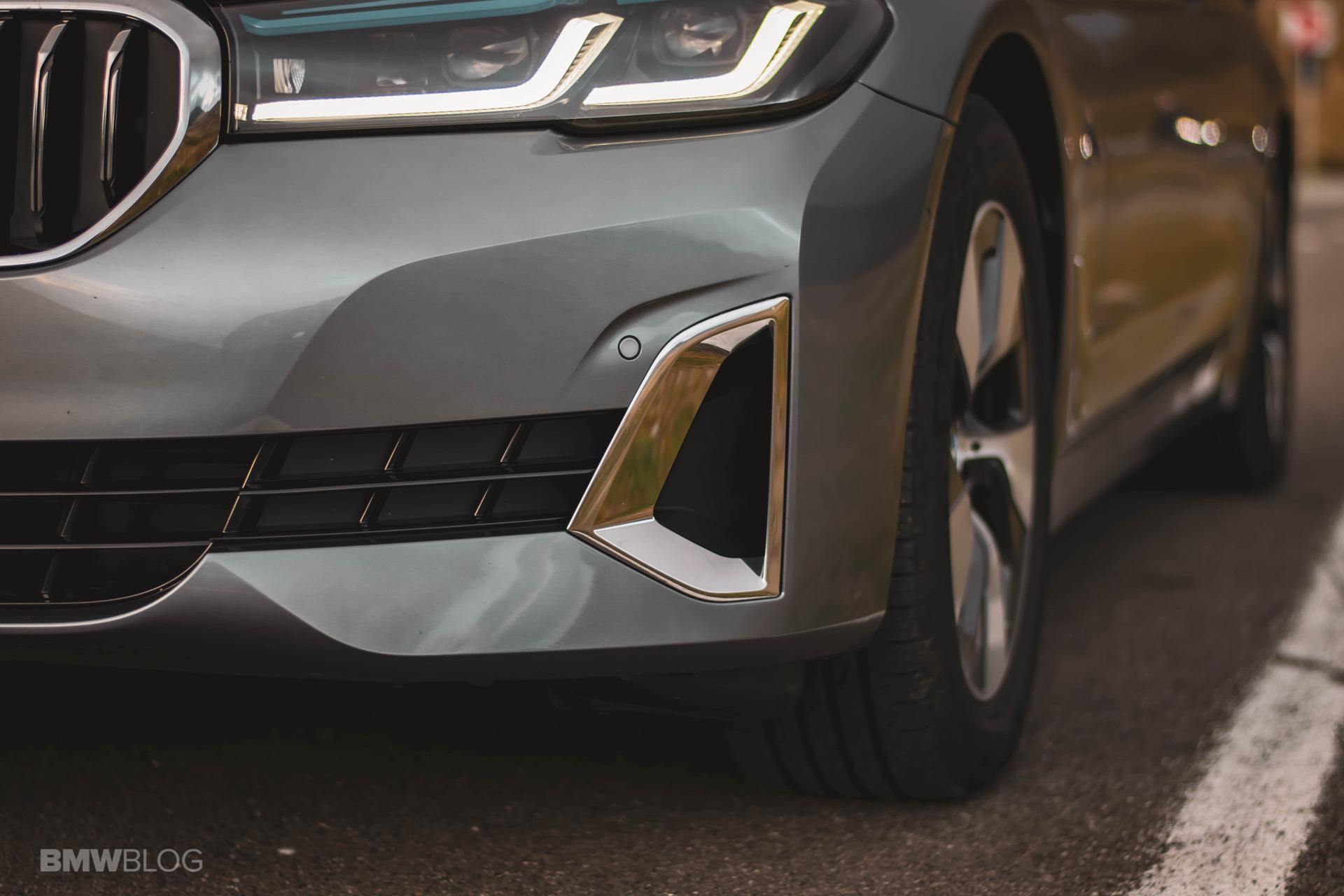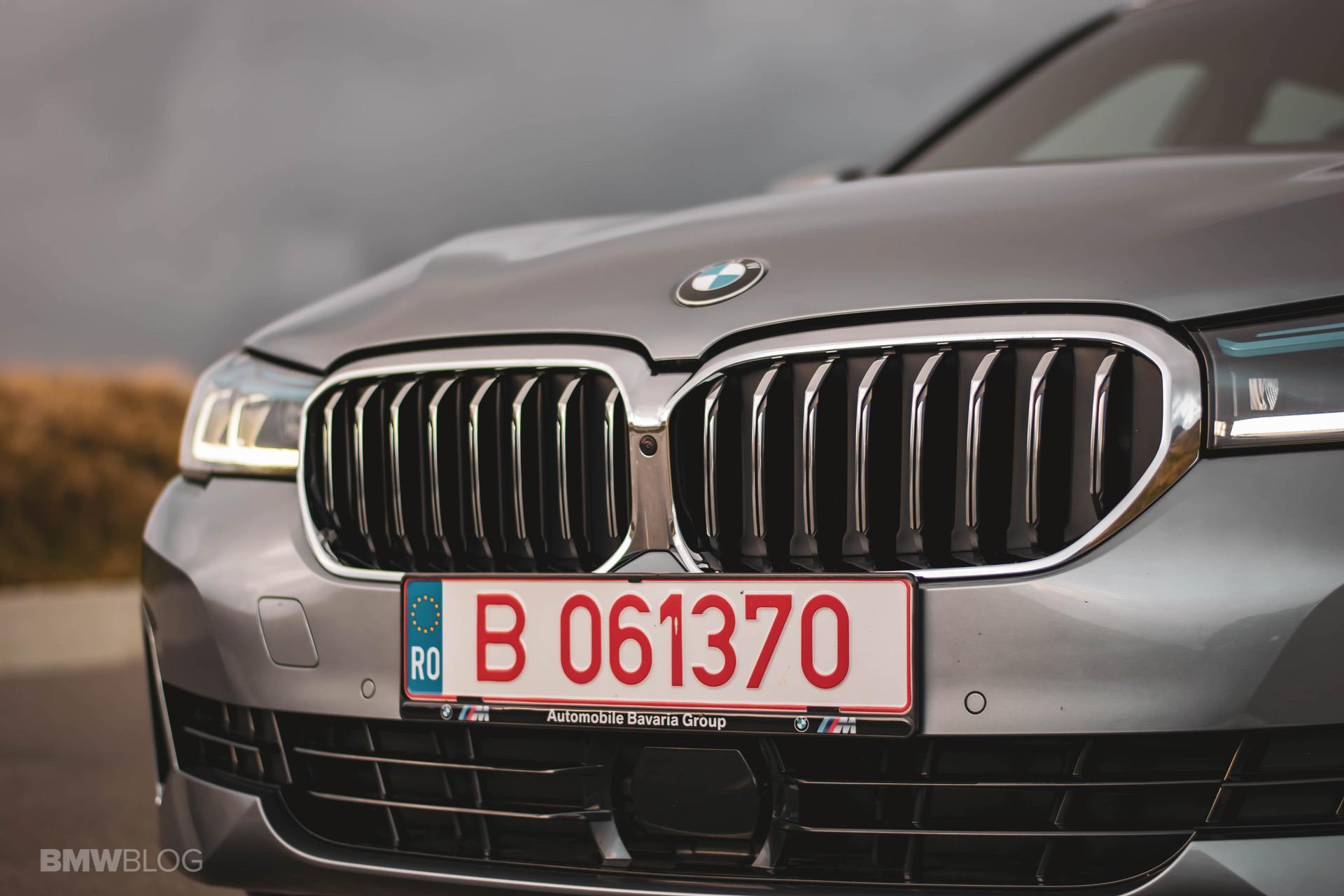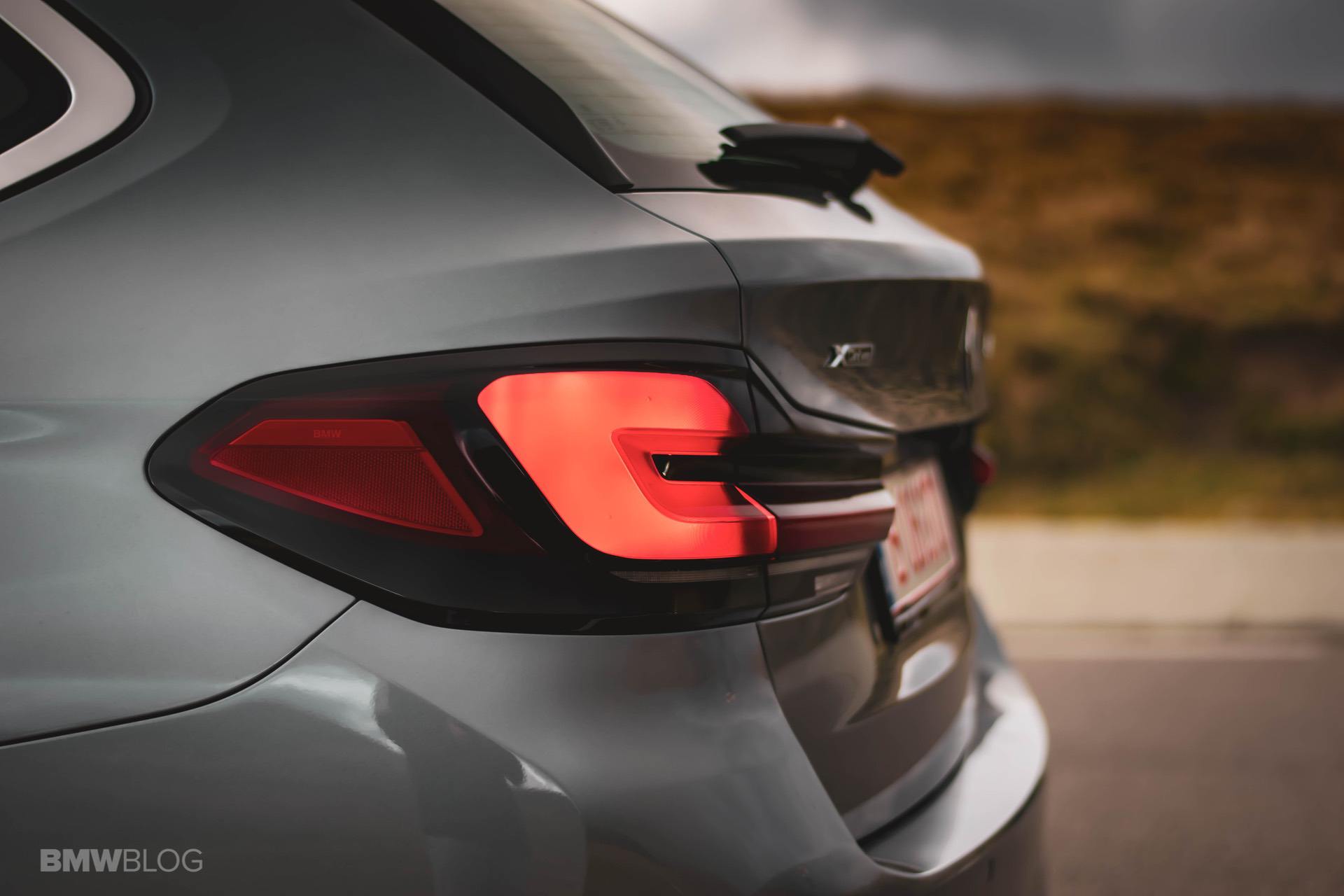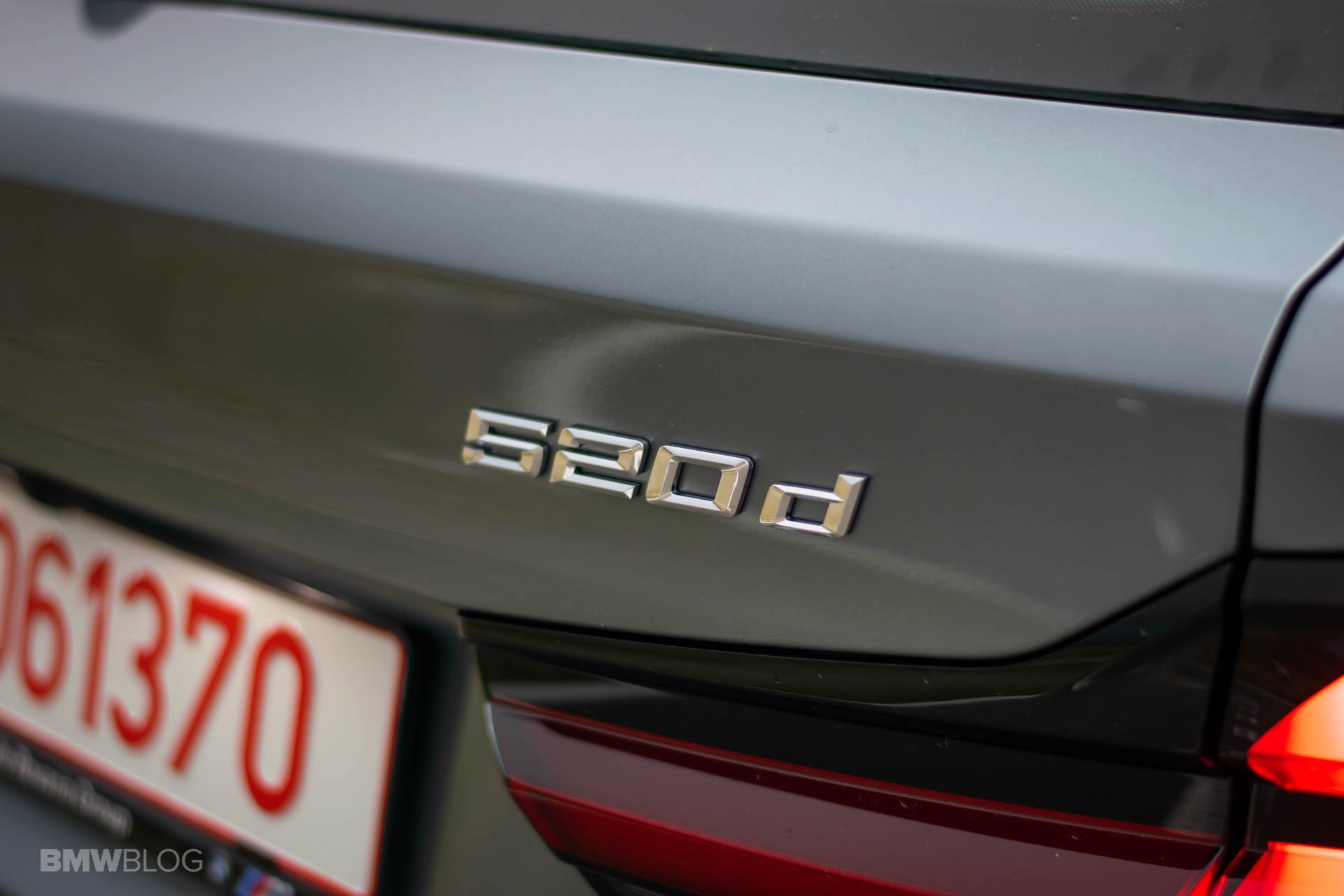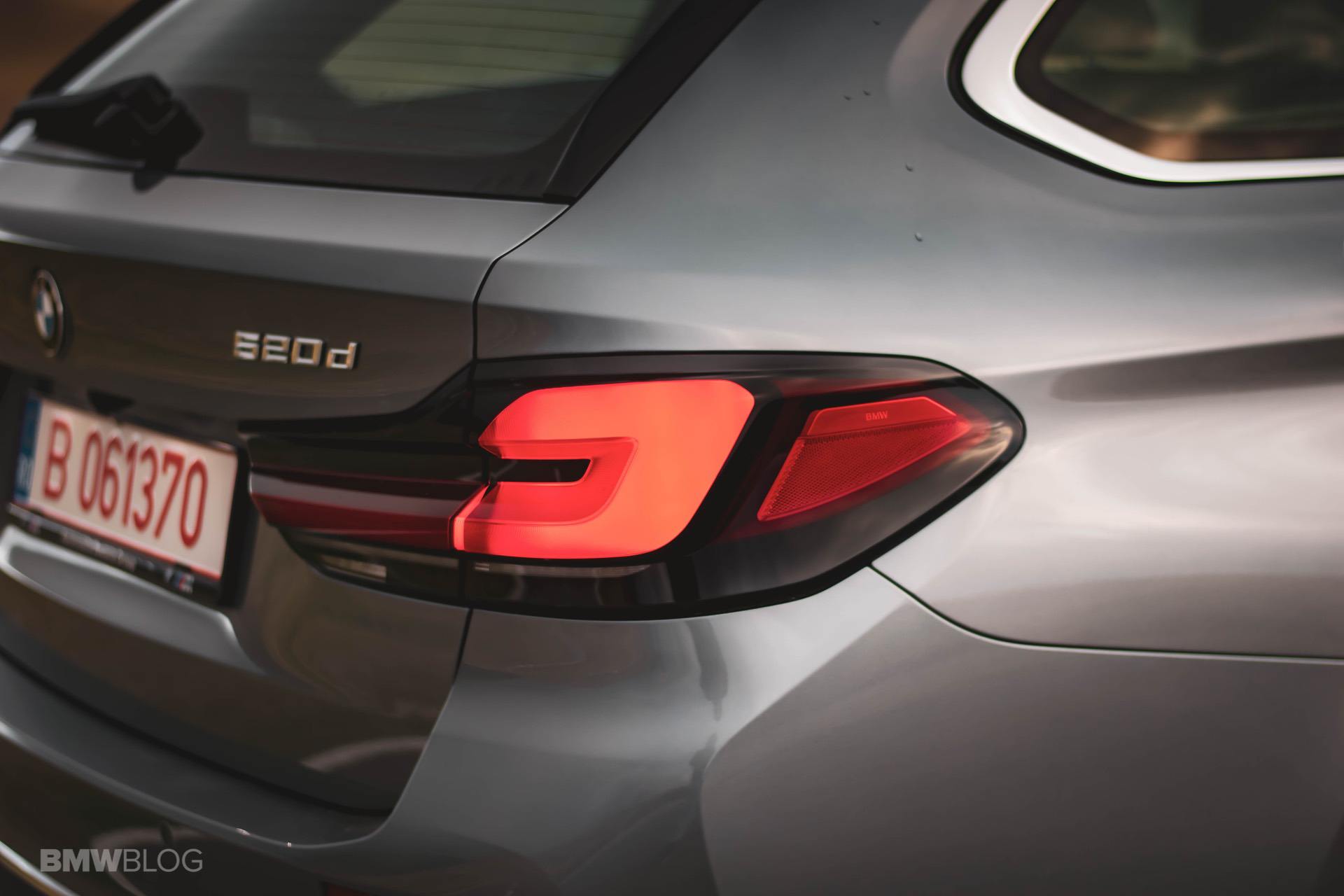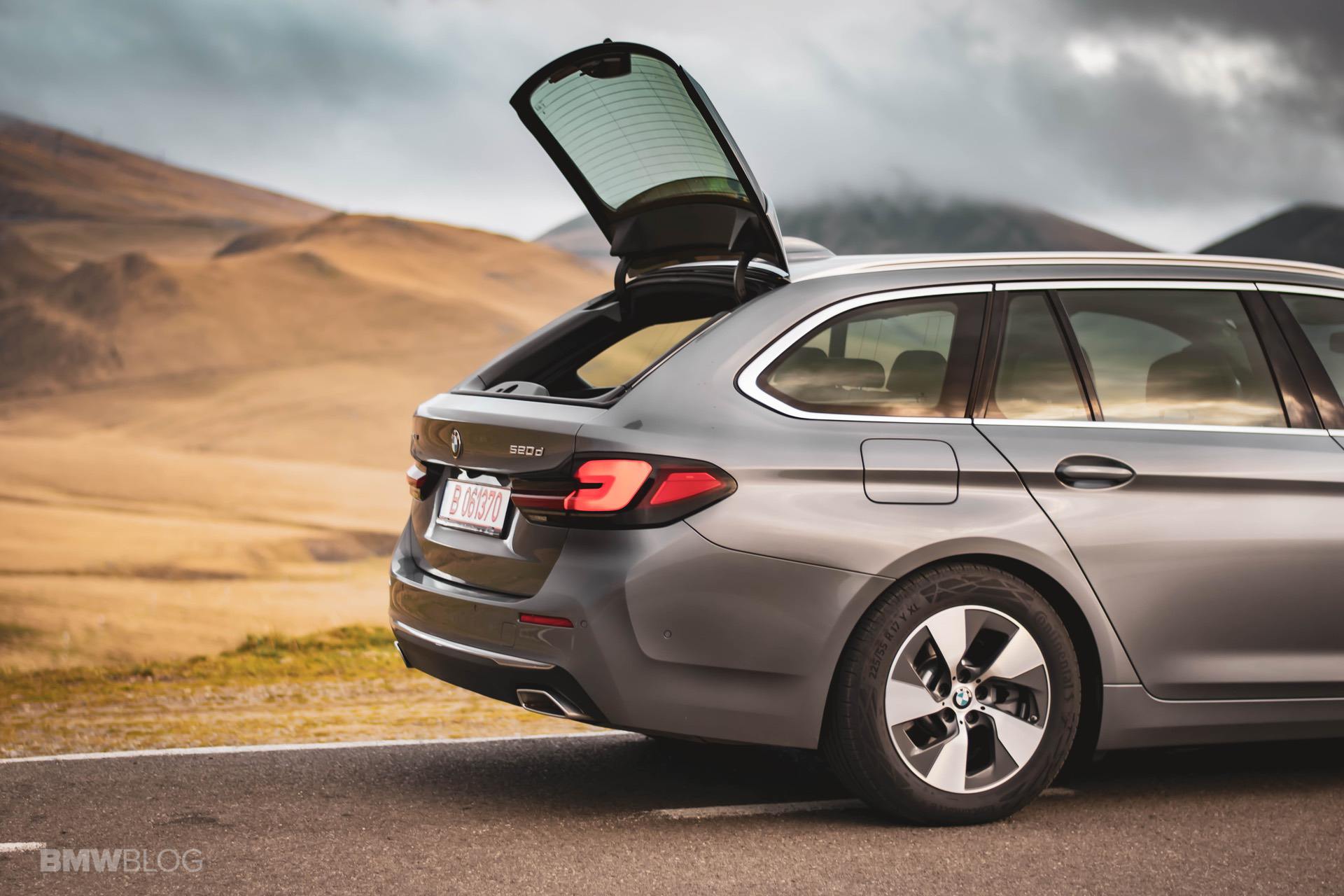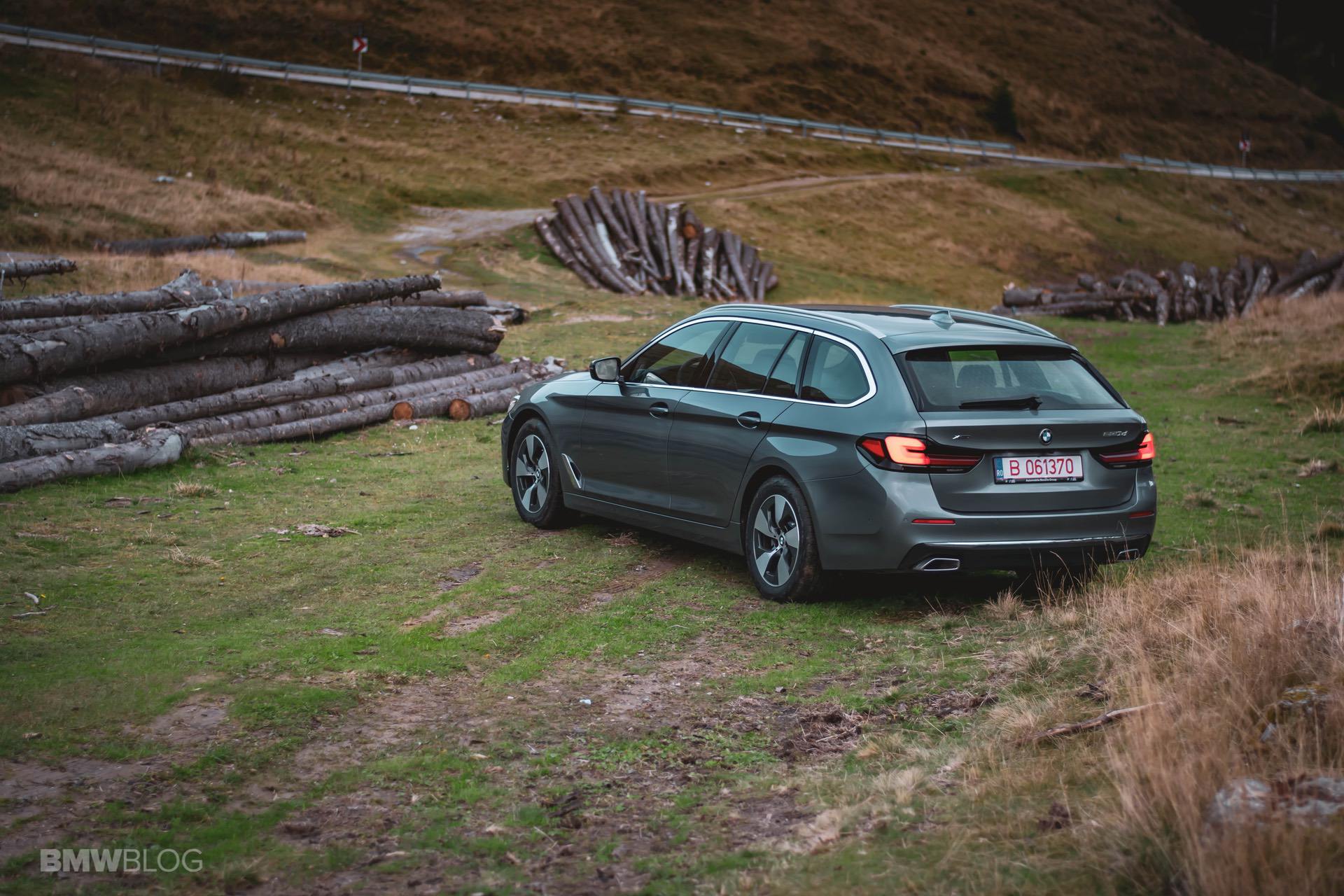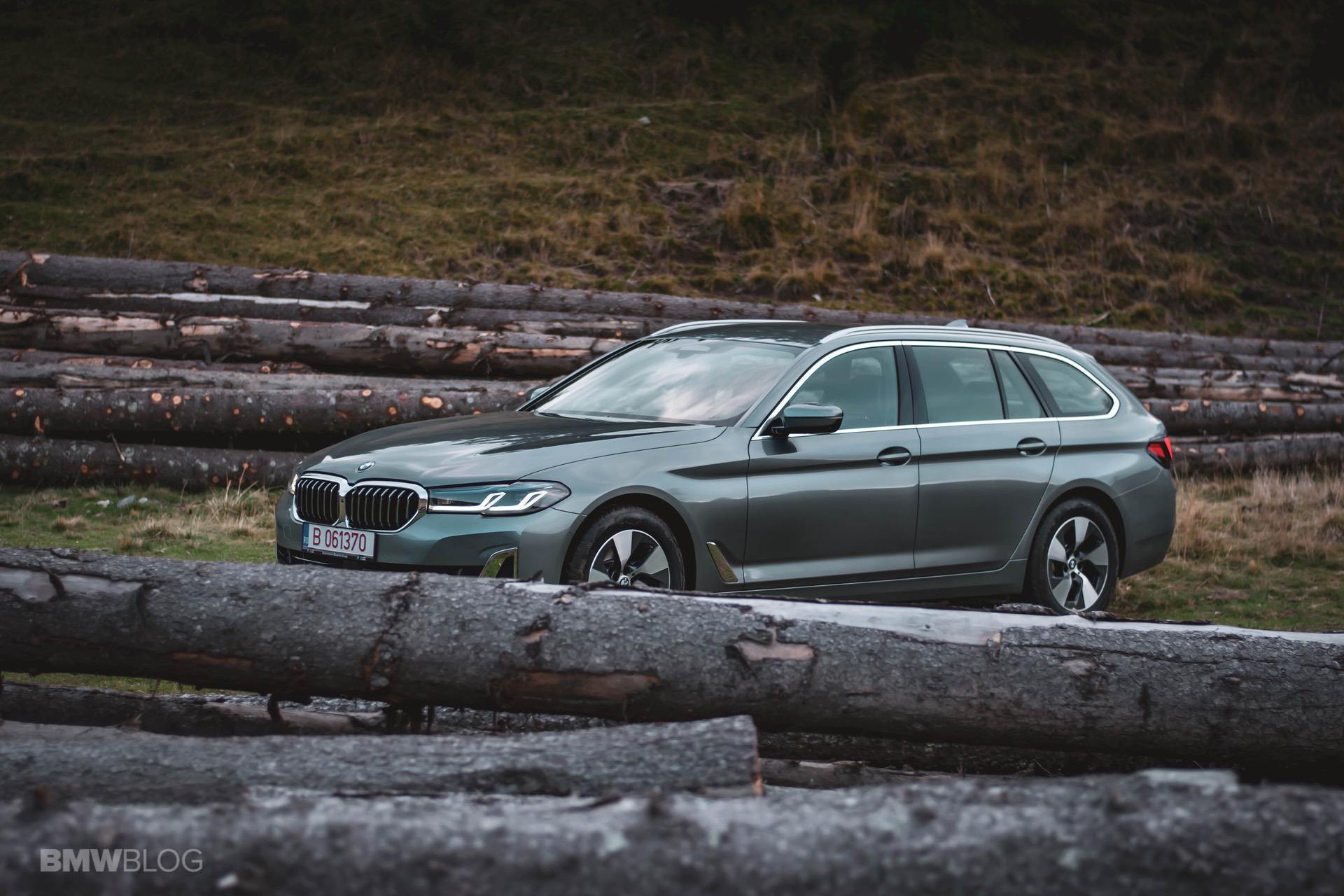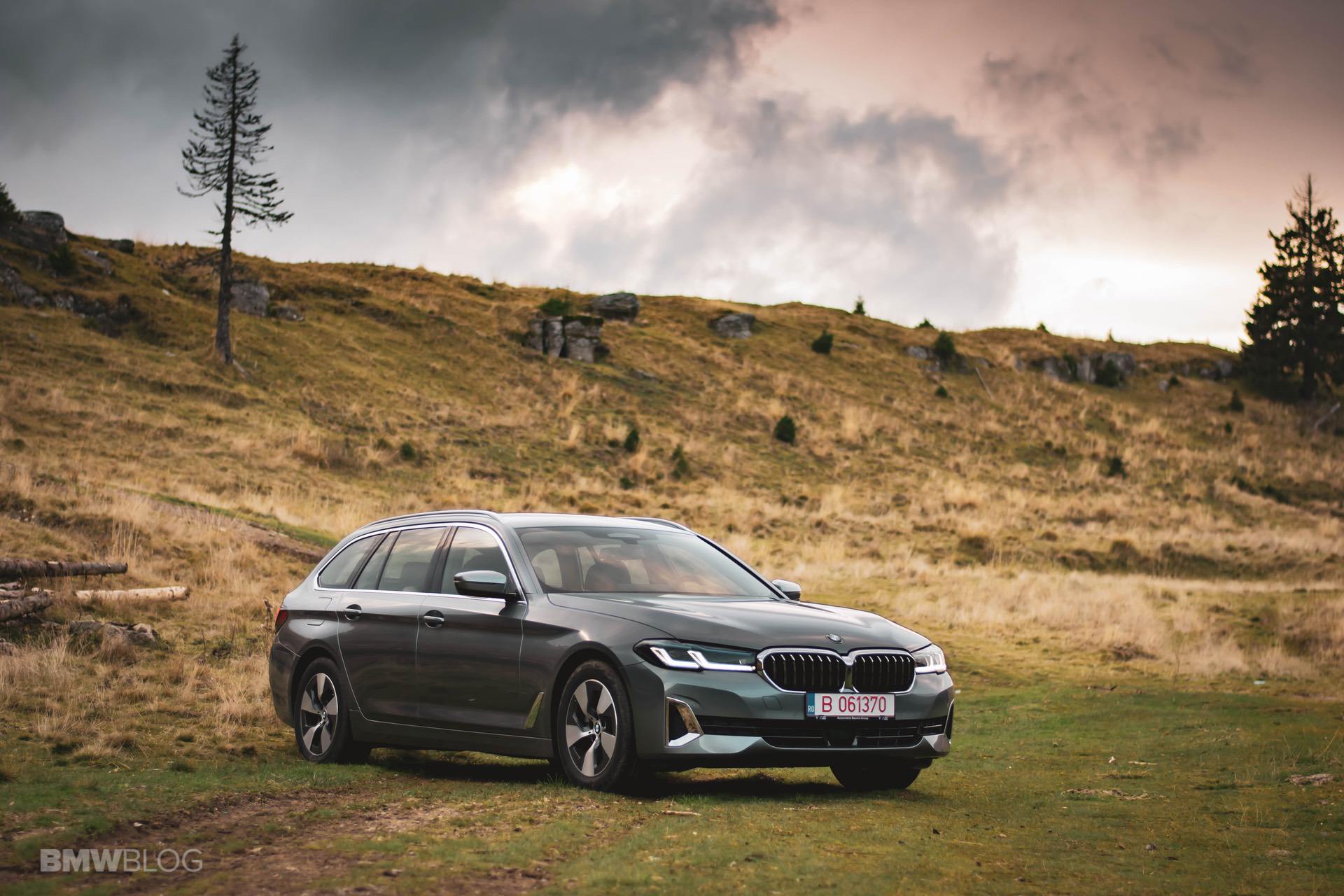Earlier this year we got a new version of the current 5 Series models. The G30 generation turned four years old and it was time to give it an ‘impulse’ as BMW calls it, to keep it relevant and competitive against current rivals. That’s the way BMW did things since what seems like forever and, even though the G30 platform has been quite successful and holds its own rather well, there was no reason to abandon the old ways of doing things.
Subtle But Effective Visual Changes
As a matter of fact, as a rule, whenever BMW releases an LCI (life-cycle impulse) you can easily see how well the car is doing by the amount of changes done to its design. In the case of the BMW 5 Series, as the pictures show, those changes were mostly subtle, limited, if you will.
The biggest update happened in the headlight department, where the new model received a new pattern for the Daytime Running Lights (DRL) that can no longer be called ‘Corona Rings’. These new lights are sharper and resemble other cars in the range, like the 7 Series or the X7.
The blue highlights that we used to look for on the pre-facelift models fitted with Laser Lights are also a lot more noticeable, having been repositioned at the top of the cluster, dominating the front fascia, if you will.
The kidney grille was also slightly updated. It is now a bit wider and taller but, thankfully, it didn’t grow to ridiculous size like it happened on other models. It is also a bit sharper, with a 3D profile up front that does work well with the character lines infused into the headlamps thanks to the aforementioned blue accent of the Laser lights. What’s even more interesting though is that the M Sport and Luxury Line models have also been slightly updated.
Our tester came in the latter configuration and it was a bit odd, to be fair. The reason why I had mixed feelings about it must’ve had something to do with the fact that I got used to driving M Sport models. I have somehow become used to them and expected nothing less.
The Luxury Line package, however, comes with triangular-shaped air intakes on the sides of the front bumper, wrapped in chrome, as well as a side-to-side grille underneath that’s meant to cool off the engine and its ancillaries.
All in all, the changes are subtle but you do notice that the 5 Series Facelift has a different face right now, especially when fitted with the Luxury Line package.
Round the back, the modifications are even smaller. New taillights have been designed, with a 3D-shape once again, a shape that’s very tricky to capture on camera. They are now lit by LEDs and look a bit beefier than before, giving the rear end a bulkier look.
All new models also come with trapezoidal exhaust, which was also the case with our BMW 520d Touring xDrive model. As for the color, in case you were wondering, this car was dressed in Bluestone, a rather interesting shade that’s a bit shinier than the much more widely known Bernina Grey. It was rather tough to capture it on ‘film’ as accurately as possible.
An Elegant and Premium Interior
Inside the cabin, the same story applies. The design remains virtually unchanged but you do get some new color choices and new tech. And that’s quintessential to the new 5 Series. Our tester had a rather austere layout inside, black being the dominant color. We had Nappa leather all around, which is still a superb choice, no matter the car, and Comfort seats up front.
In terms of interior space, things are as good as usual. There’s ample room in the front and in the back, no complaints there. Since this is a Touring model, a lot of emphasis was put on practicality. The dual-opening tailgate is still here, as standard, allowing you to store items in the back without having to open the entire tailgate.
You can just pop the glass open, in which case, the boot cover retracts automatically, a nice touch to keep prying eyes away from whatever you have in the back. There are also all sorts of hooks available back there, for groceries, as well as slides and anchors for making sure nothing slips.
There’s even a retractable net located behind the rear headrests that can be pulled up to make sure the contents in the back don’t roll into the cabin. And if you want to, you can fold the rear seats and get a cavernous 1,700-liter storage bin for your carrying needs. The best part about folding those seats is that you can store the covers under the floor, in a special cut out made for them, a nice touch that spares you the trouble of finding a place to put them.
This particular tester, even though it was just a 520d, was fitted with nearly all the options you could get. The seats up front were heated, ventilated and could massage you for days if you wanted them to. These are some of the most comfortable in the business right now and virtually the same you get on the 7 Series. We also had four-zone climate control, Air fragrance and a heated steering wheel which does come in handy when temperatures start to drop, as it was the case during my time with the car.
As for the novelties inside, the iDrive system now has a larger screen and you can really tell there’s a difference compared to the old setup. I’ve never been a fan of huge screens inside cars. I don’t like huge screens anywhere, from my phone, to the TV in my house but sometimes I just have to go with the flow, as certain products go out of production and you simply have to adjust. In the case of the 5 Series, I don’t think there was ever someone saying ‘I want a bigger screen in my BMW’ and yet, that’s exactly what we got.
Increasing the size of the digital instrument cluster would’ve been tricky, as it would’ve required a different matrix for the entire dashboard and that would’ve been expensive.
As for the iDrive screen, that’s easy to modify, being simply attached to the dash in the first place. And now, on the top-tier models, the screen measures a massive 12.3” diagonal. It’s a noticeable increase, especially due to the wide margins on the sides of the screen which make it feel massive and old already. That’s the thing with massive screens: you need to make sure you integrate them nicely into the dash or they’ll feel out of place.
As for the software, nothing to complain here. The system still works flawlessly and, even though I’d like a bit more color from it, the black background becoming a bit boring over time, I can’t fault it for its functionality and flawless, smooth operation.
Finally: Android Auto
The biggest change here is the introduction of Android Auto for the first time. Since I gave up on iPhones back in 2017 and switched to Samsung, I was extremely curious to test out this new feature in a BMW. Unlike other companies out there, the BMW integration is done wirelessly and, even though I did have some issues the first time I connected my phone to the car’s systems, things came back to normal the next day.
The issues I had the first time around were mostly app-related. For example, Spotify simply wouldn’t work at times and I couldn’t exit the app on the phone for some reason. Luckily things got better.
BMW also introduced its new Maps system which now uses cloud-technology and more advanced features to make sure your experience is better than ever. It offers better route guidance, more accurate ETAs and a couple of new functions, such as finding a parking space.
And that would’ve been all useful to me in the past but, the truth of the matter is, you’re going to use Waze or Gmaps all the time anyway and they are as accurate as they can get these days, making the new Maps navigation system from BMW rather obsolete. Sure, they might not work that well when you don’t have good reception, but those situations will seldom come around, to be fair.
BMW also said the driving assistance functions have been upgraded, with Lane Departure Warning now returning you to your lane in case you’re not paying attention to the road, for example. The Driving Assistant Professional option now includes Active Navigation with the help of the Lane Change Assistant which means the car can switch lanes on its own while automatic formation of emergency lane and junction warning functions are also offered. Mind you, these features are only available in certain countries so don’t get too excited about using them before you check their availability. I, for example, couldn’t test them out.
48-Volt Mild Hybrid Aboard
And all that tech is superb and all but what about the engines and driving? Well, you’ll be glad to know that they’ve all been upgraded as well. Unlike on other facelifts, the new 5 Series got a huge revamp for its engines. All four-cylinder and six-cylinder models have been upgraded and are now mild-hybrids, using a 48-volt system. That’s unusual for a facelift but, BMW had to do it in order to keep up with the tightening regulations about emissions and such.
Therefore, all models except the V8-powered ones and the plug-in hybrids, now have a small 11-hp electric motor under the hood, tasked with various functions. This small motor works as a starter-generator and basically takes over in certain driving situations. The car recuperates energy when decelerating, for example when approaching a light or when slowing down on the highway and stores it into an extra battery located somewhere in the car.
In our case, the battery was in the engine bay, but on larger motors it may be stored under the passenger seat.
The energy stored is then used by the electric motor for setting off or for an extra boost of power from time to time. And it works rather well. What you’ll instantly notice is that the car will be coasting a lot of the time, sometimes with the internal combustion engine completely off.
It’s a weird feeling because whenever you’re slowing down, you’re expecting a certain rate of deceleration that might not actually be there, because the car is coasting instead. I’m not saying it was bad, it was just different and it takes a bit of getting used to it.
As a matter of fact, this new approach can also be seen in the instrument cluster that has a different layout. Basically, you don’t see a rev counter any more, on the right side, just a power reserve meter, similar to the one found in Rolls-Royce models. You only get a rev counter when you’re in sport mode, otherwise, the right side of the instrument cluster is just showing the energy consumption of the car and how efficient you are.
Setting off is also a bit different than usual, because the electric motor chips in. And the throttle response is very sharp because of it, making you leap ahead of everyone else when setting off, by accident. Once again, it’s only a matter of getting used to it, not something I didn’t like.
This starter-generator then has a couple other upgrades up its sleeve. For example, starting the engine is a lot smoother than before, and that makes a big difference, especially on a 520d like the one we’ve been testing. It also chips in when under hard acceleration and made the car feel like it had more than 190 HP whenever I needed it to be more powerful, covering the power lag sequences well.
Speaking of the diesel mill under the hood, it’s as reliable as ever, even though people are not choosing it as often as they used to. The old workhorse of the BMW range is thoroughly isolated from the cabin and you rarely notice it from the inside. It also pulls impressively well, considering it was hauling 1.9 tons of metal around but I guess the 11 extra HP of the electric motor do their part in that regard. But apart from offering extra grunt and a smoother operation, the main goal of this mild-hybrid setup is to drop fuel consumption and emission figures. Does it work?
Impressive Fuel Consumption
During my time with the car, the average fuel consumption recorded by the 520d xDrive Touring model I drove around town was under 7 l/100 km covered (over 33.6 mpg US, 40.3 mpg UK). Those are some seriously good numbers for a car this heavy, driven in one of the busiest cities in the world.
Get it outside the city limits and you’ll see even better numbers. Keeping a steady 50 mph average speed I saw a fuel consumption of 5 l/100 km (56.4 mpg UK, 47 mpg US) while on the highway, at an average speed of 75 mph the on-board computer showed an average of 5.8 l/100 km (40.5 mpg US, 48.7 mpg UK). That means you can do a lot of highway cruising at the top of the speed limit with a full tank of diesel. And that means the 520d has a seriously big chance of remaining a crowd favorite, especially in Germany, where long commutes are rather common and people are looking for the best combo for longer trips.
For that kind of job, the 5 Series is still one of the best choices out there. The ride is basically a comfortable as it gets and the sound isolation is great. And I’m not complimenting it for nothing. As I mentioned, the 2-liter 4-pot under the hood is barely noticeable most of the time and on the highway, things are eerily quiet as well.
The Touring comes with air suspension on the rear axle as standard and that makes the 5er the most comfortable car in the segment, without having to pay extra for it. Our tester had the adaptive suspension at its disposal as well and while it may be expensive, it changes the character of the car depending on the driving mode you choose.
Despite having a 90,000-Euro price tag, came with the stock 17” rims, which put a lot of rubber in between them and the road. That must’ve helped so you might have a different experience, if you drive a different model with a different wheel setup. But my experience was refined overall, giving me a GT feeling even though the engine under the hood would not make the cut for a real grand tourer.
Comfort truly describes the way the car feels in the plushest setting while Sport mode stiffens up everything but doesn’t really keep the car’s weight in check as you might think. It still leans quite a lot in the corners and that’s understandable, since we don’t have the M Sport package to rely on here. I also don’t think a lot of people will be buying a Luxury Line 520d Touring to do laps around Monza…
Should I Buy One?
Therefore, the updated 2020 5 Series Touring does exactly what you’re guessing it should: refines the recipe just a tad bit more and brings more up to date technology to the table, to stay relevant. Just as BMW got us used to over the years, the facelift makes the 5er just that bit better and since the G30 platform is one of the best in production today, not a lot of work was needed.
Some tech added here, a nip and tuck there, and what we get is a smooth, comfortable car that’s also frugal and has a lot of potential for at least three years moving forward, until the next generation comes out. As it stands now, the facelifted 5 Series Touring is an excellent choice for families looking for a reliable and future-proof model for the next few years.
2020 BMW 5 Series Touring
Exterior Appeal - 9
Interior Quality - 9
Steering Feedback - 8
Performance - 7
Handling - 7
BMWness/Ultimate Driving Machine - 8
Price Point - 7
7.9
A review of the facelifted 2020 BMW 5 Series Touring
The updated 2020 5 Series Touring does exactly what you’re guessing it should: refines the recipe just a tad bit more and brings more up to date technology to the table, to stay relevant. Just as BMW got us used to over the years, the facelift makes the 5er just that bit better and since the G30 platform is one of the best in production today, not a lot of work was needed.


